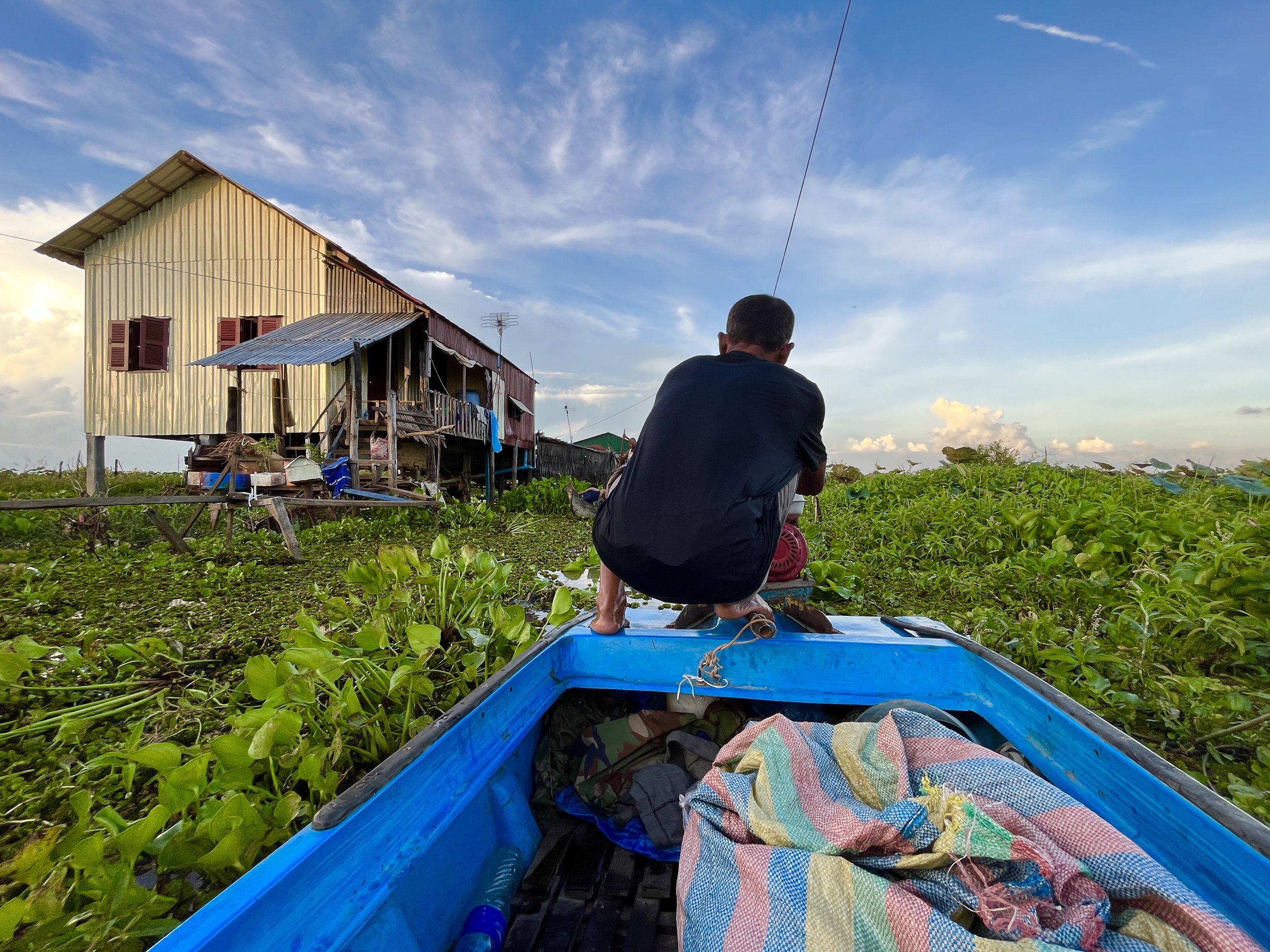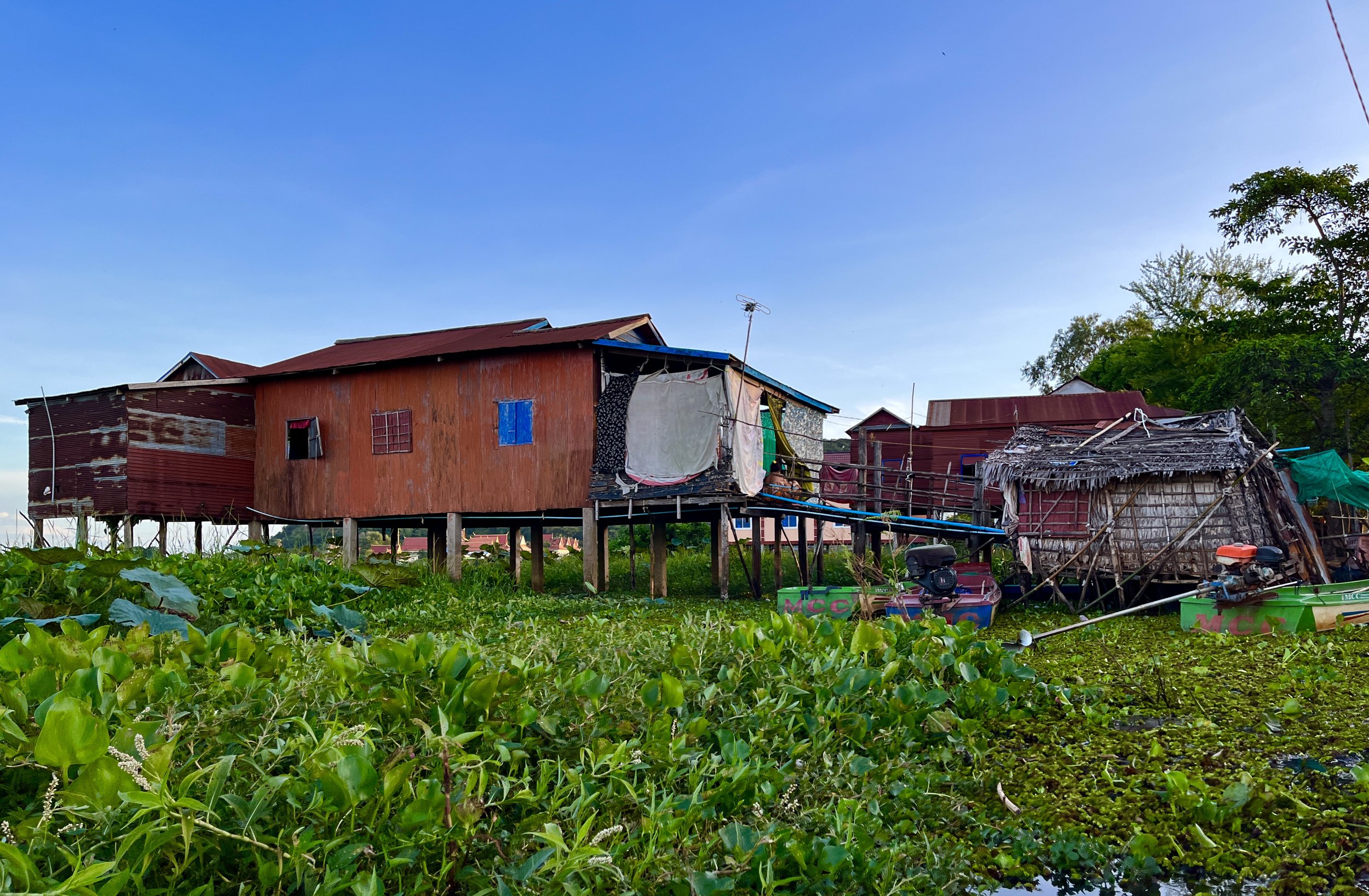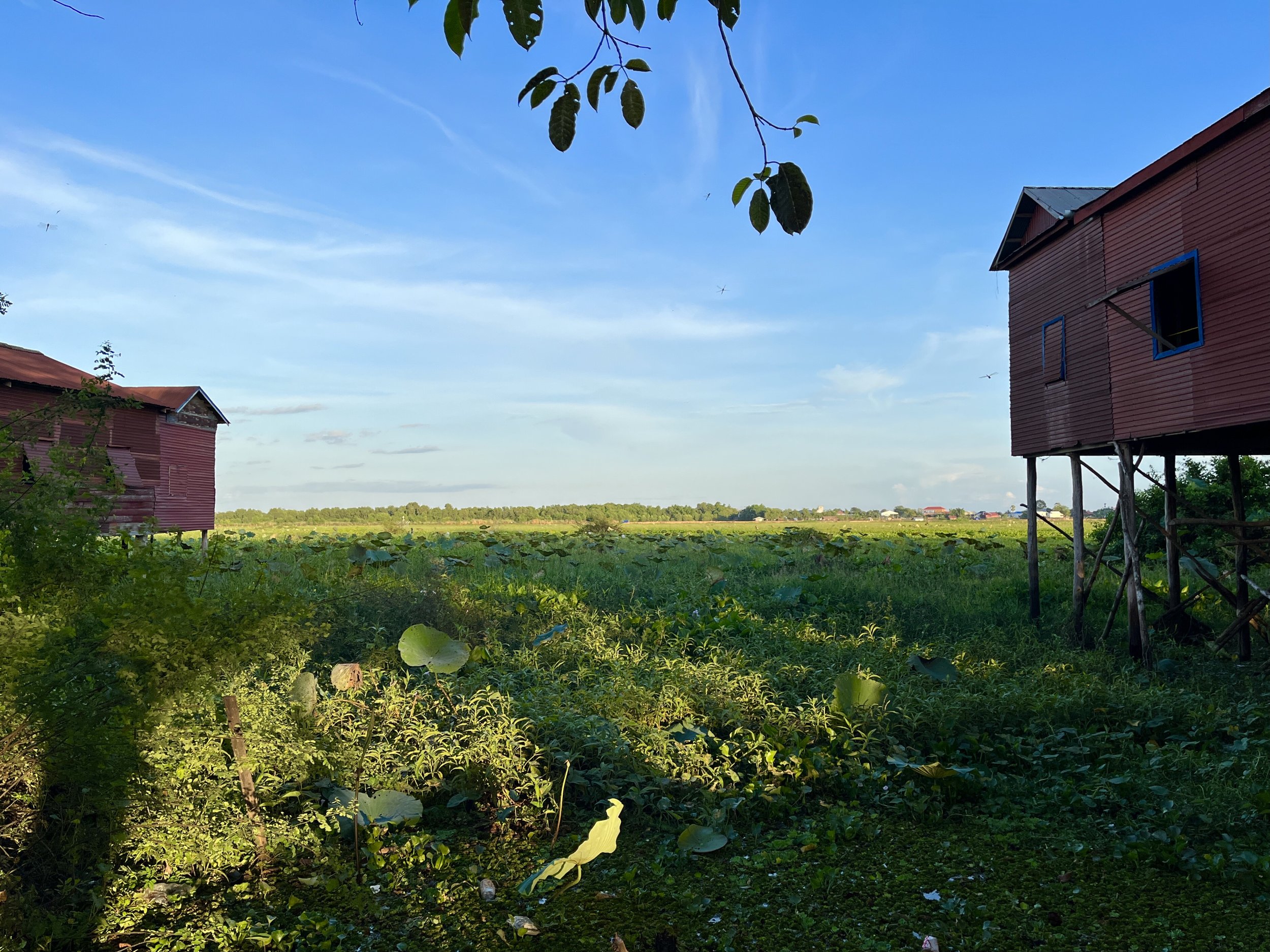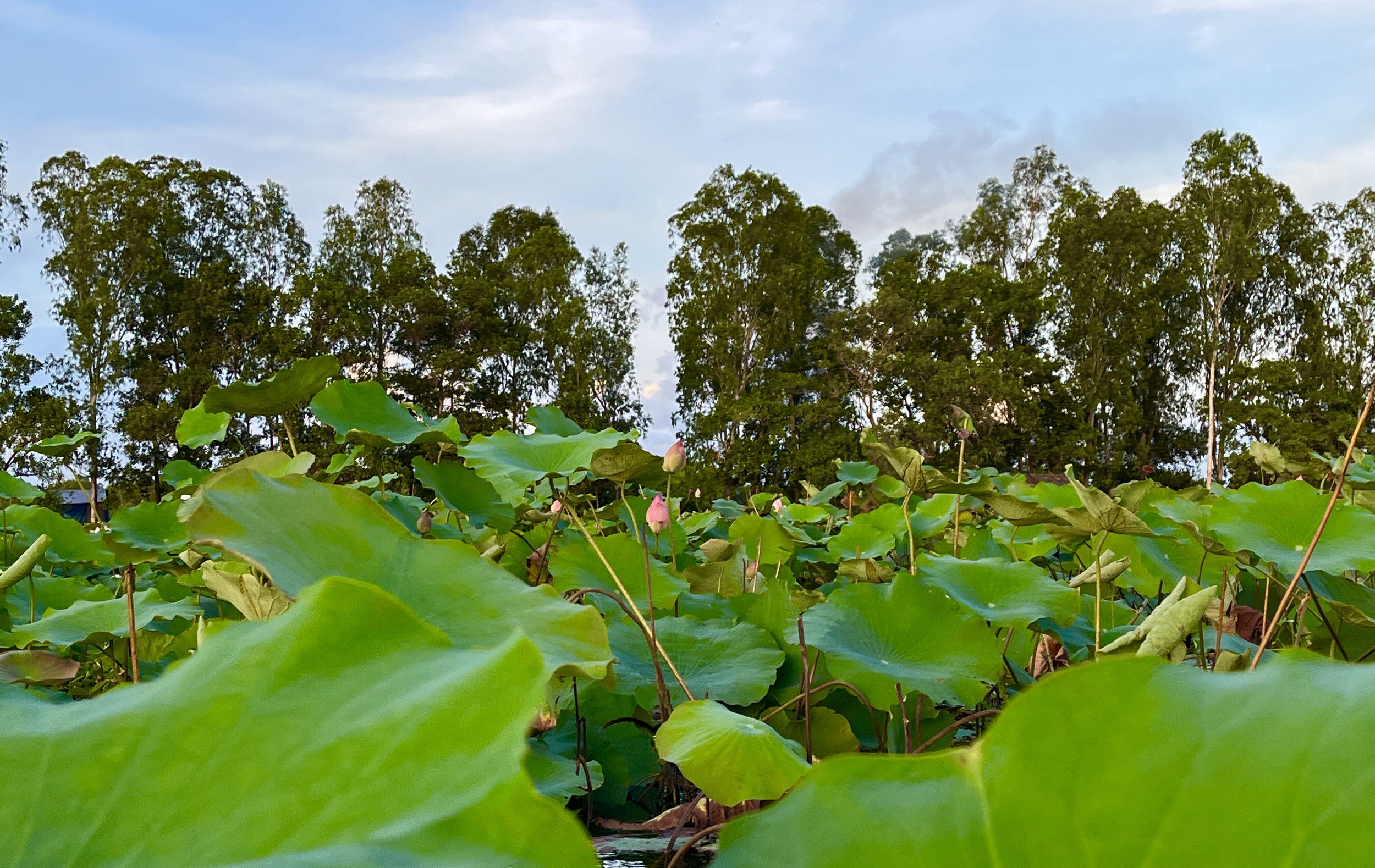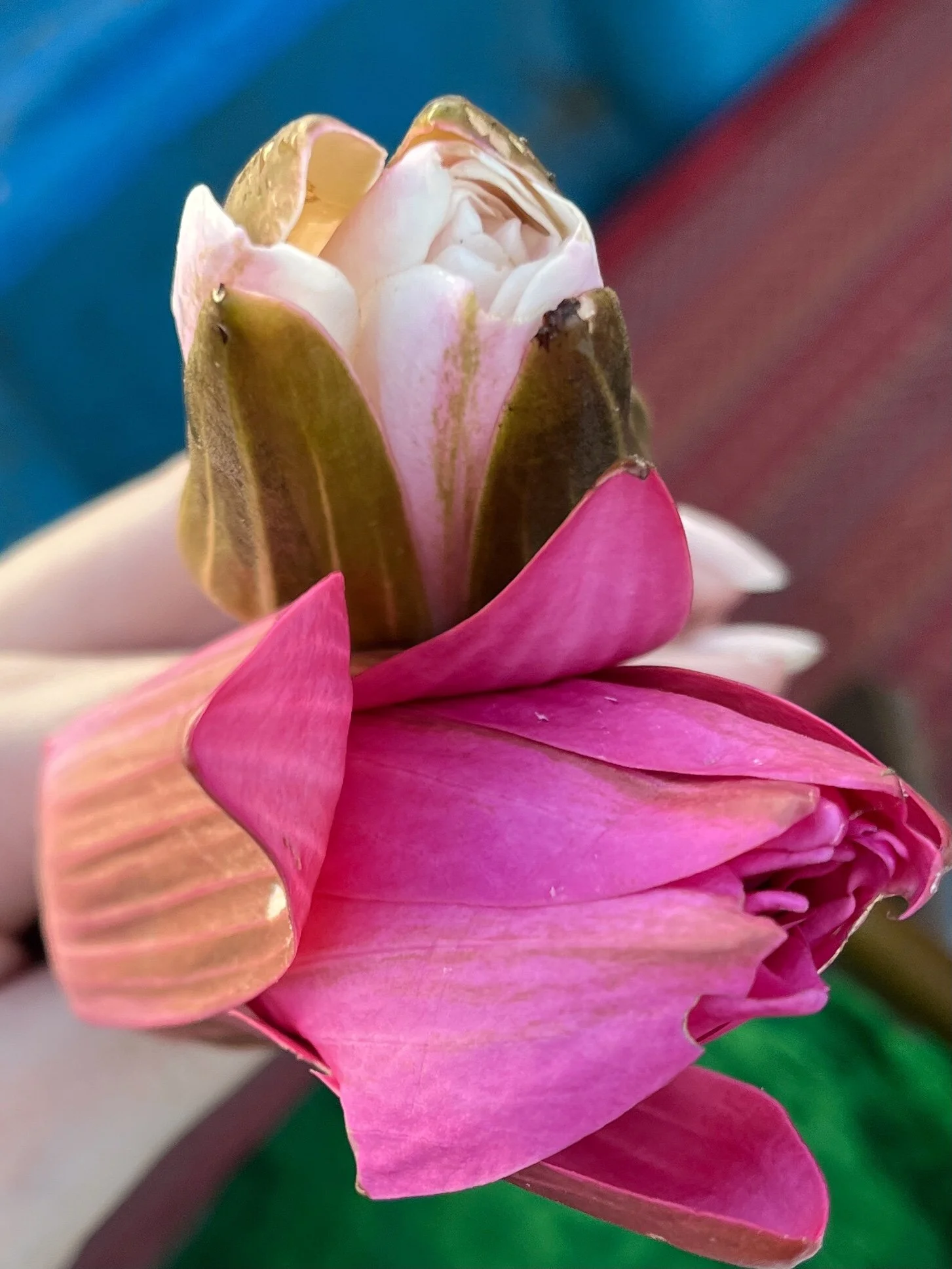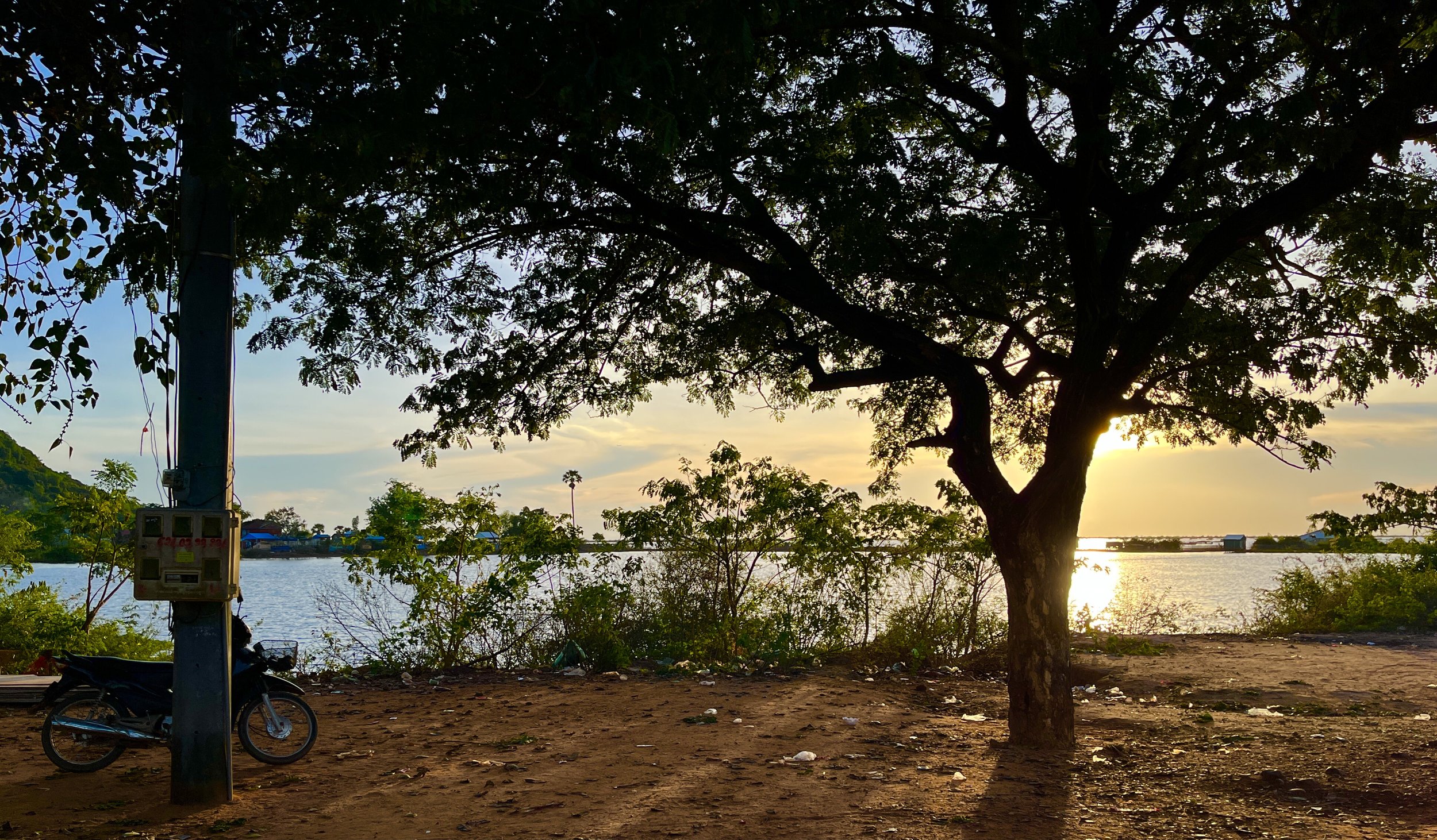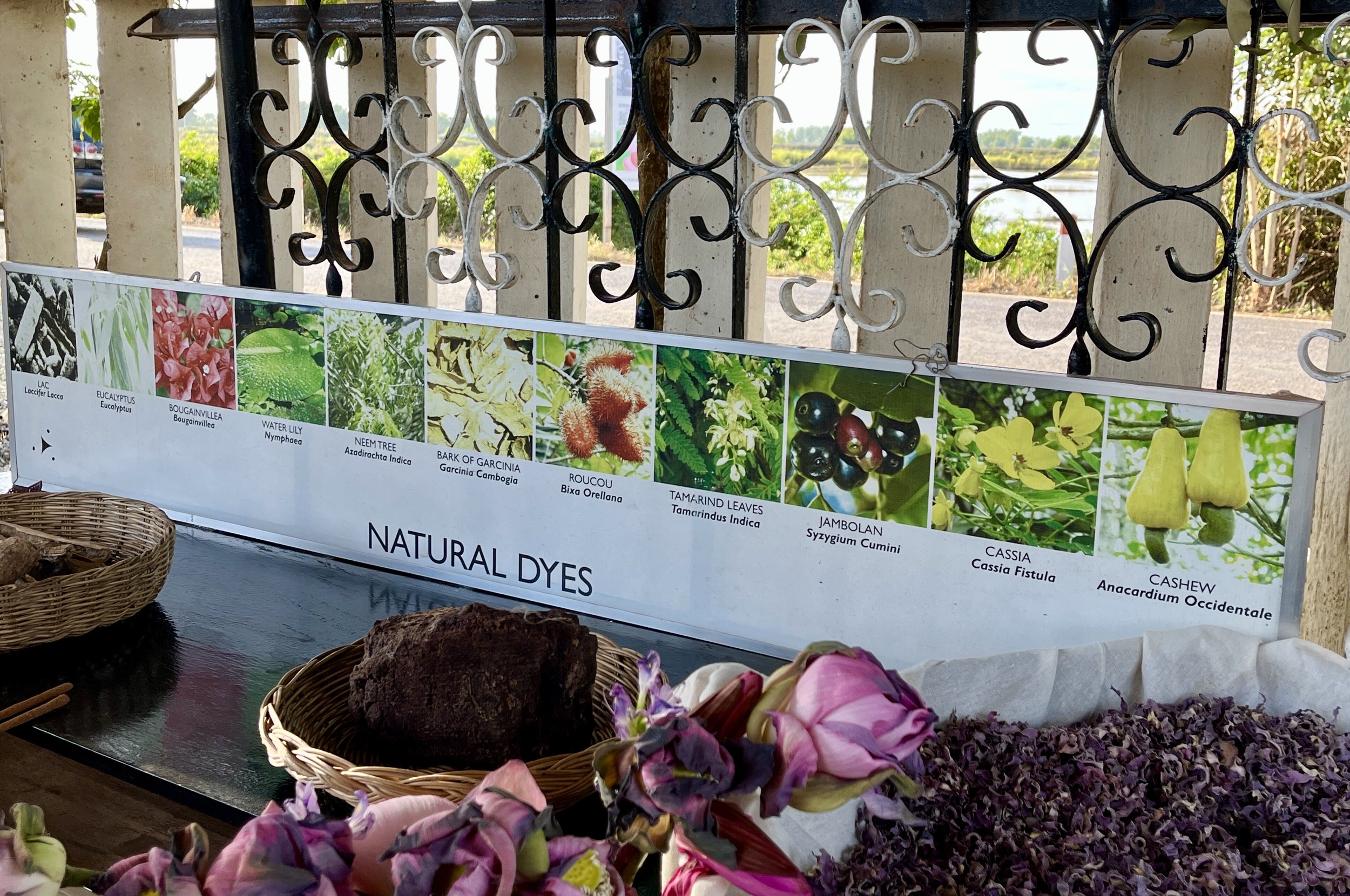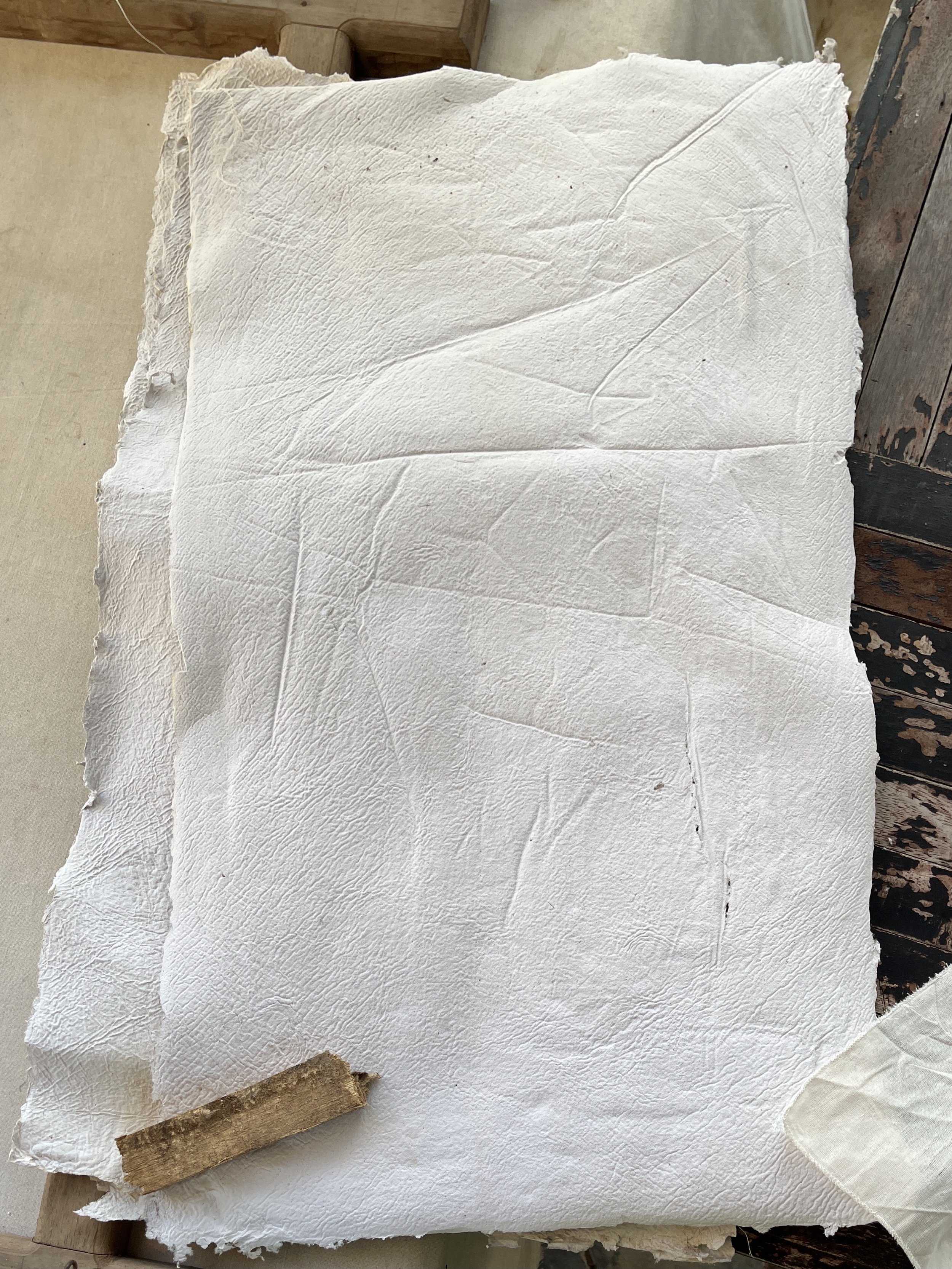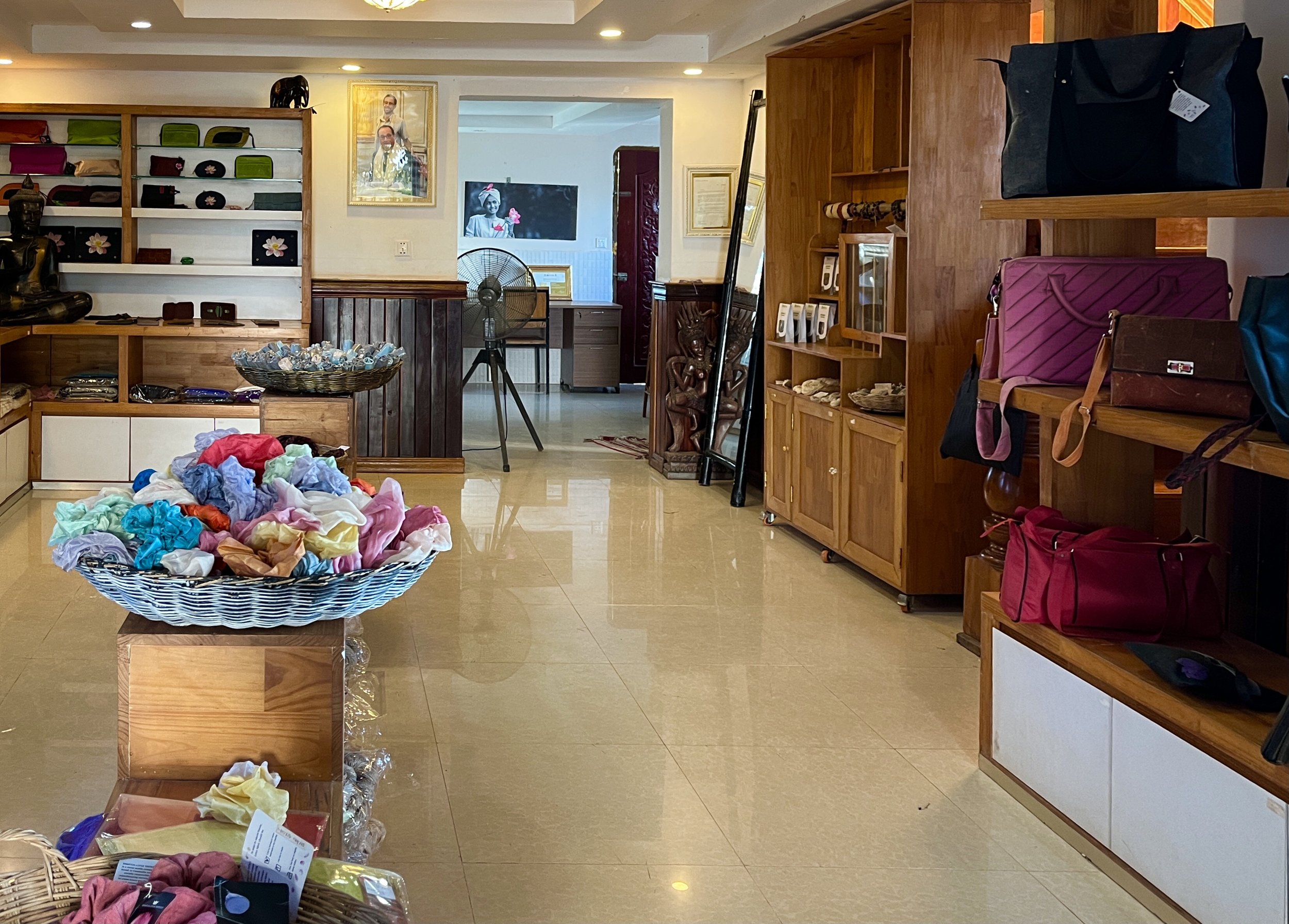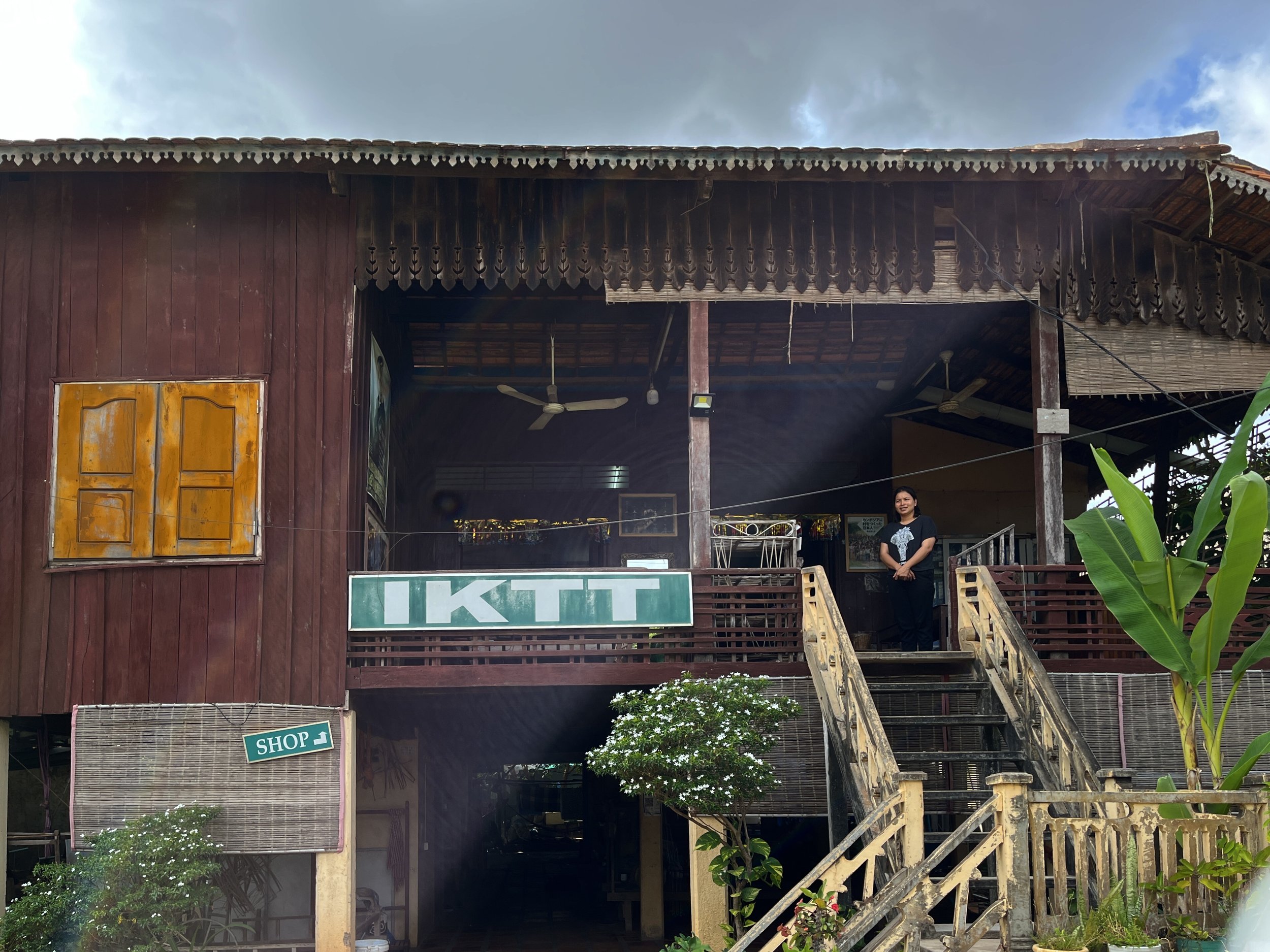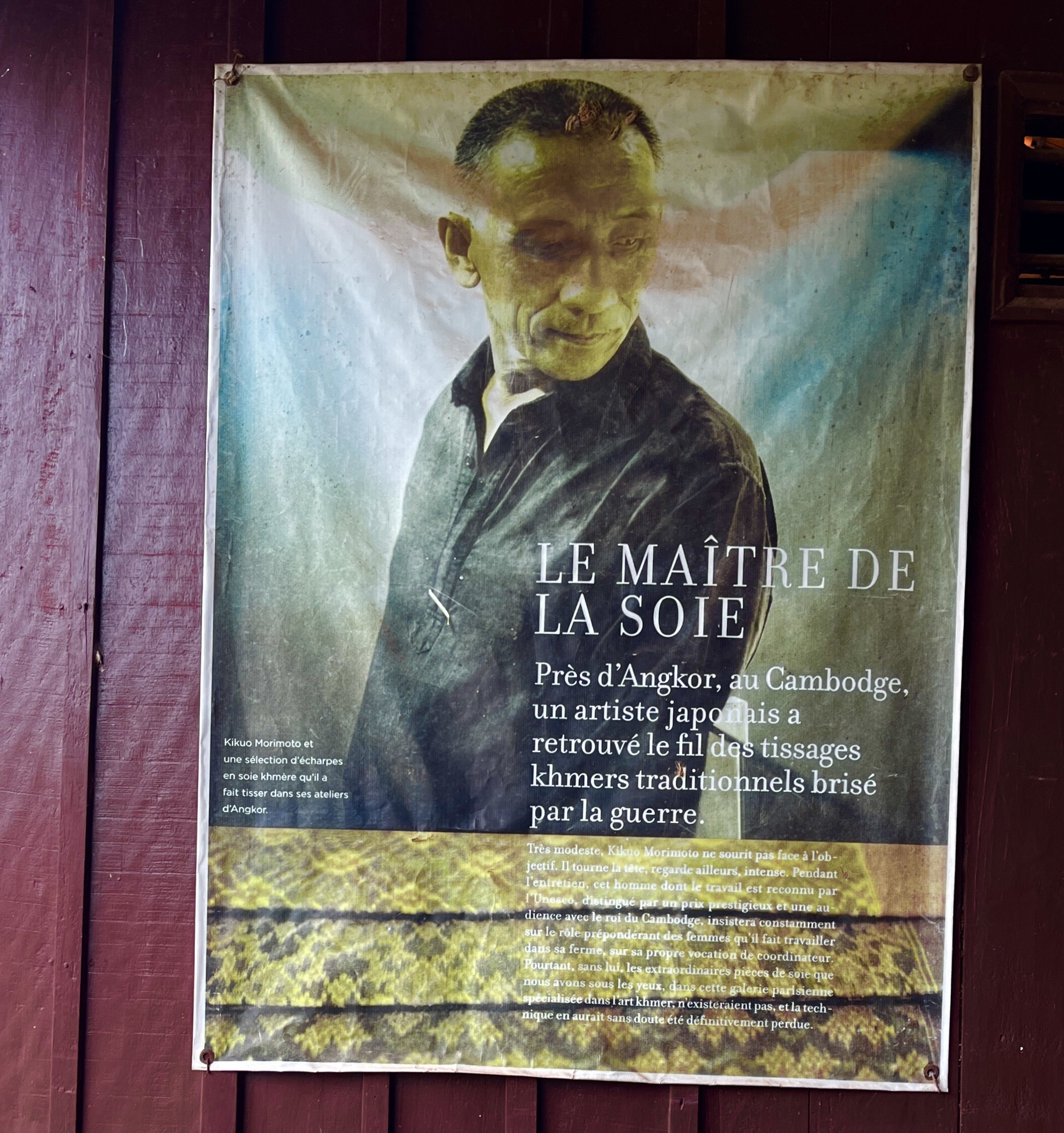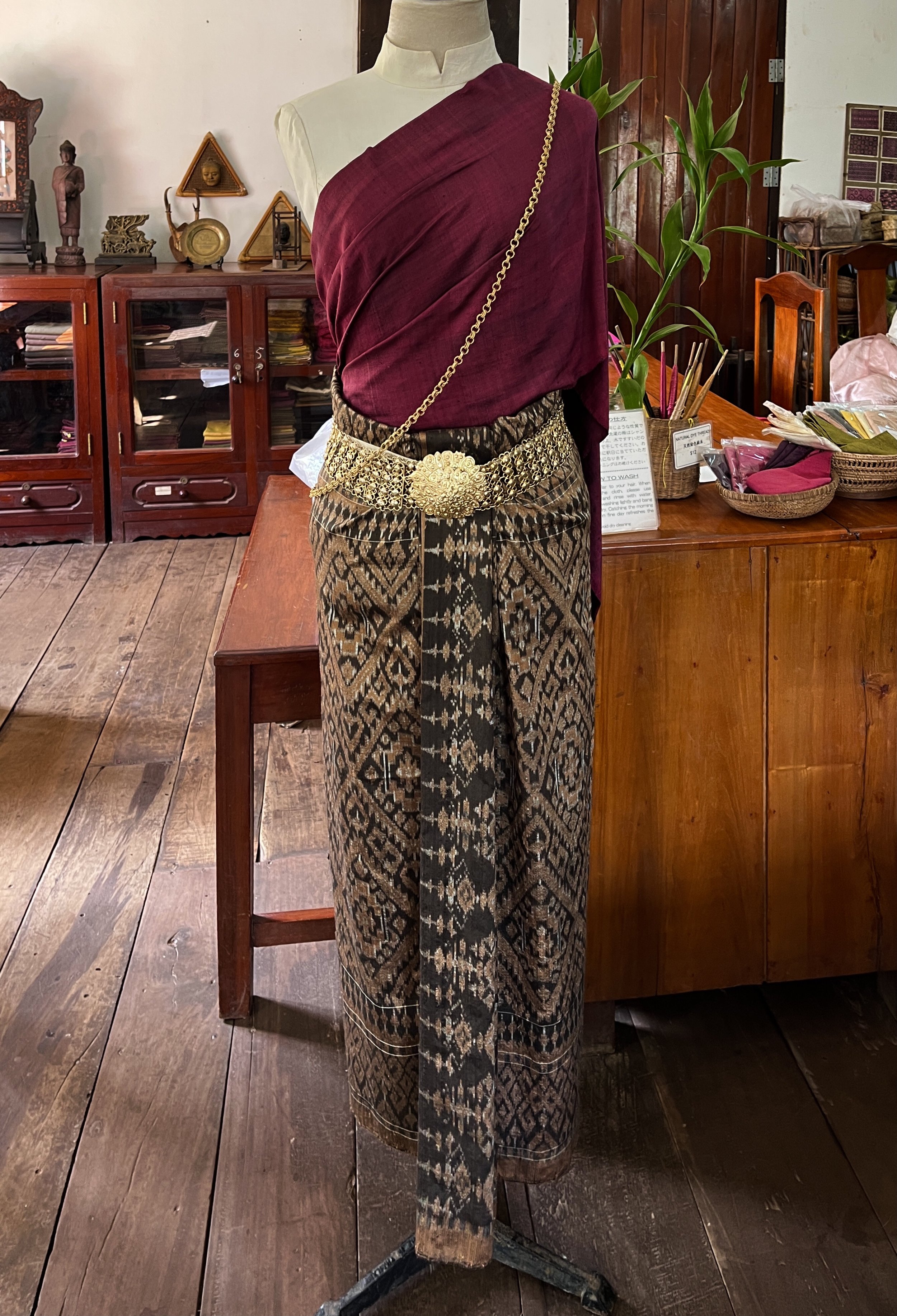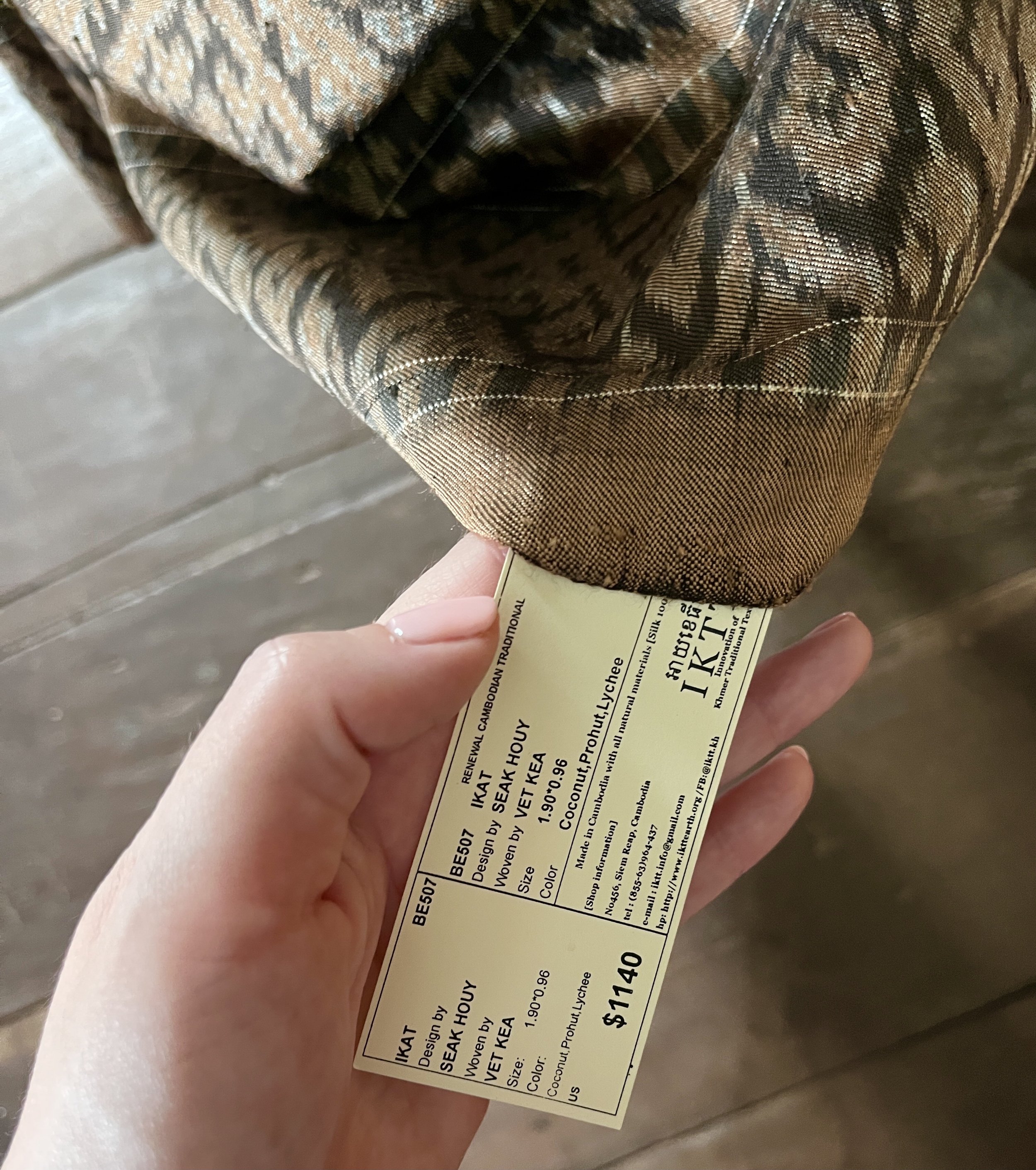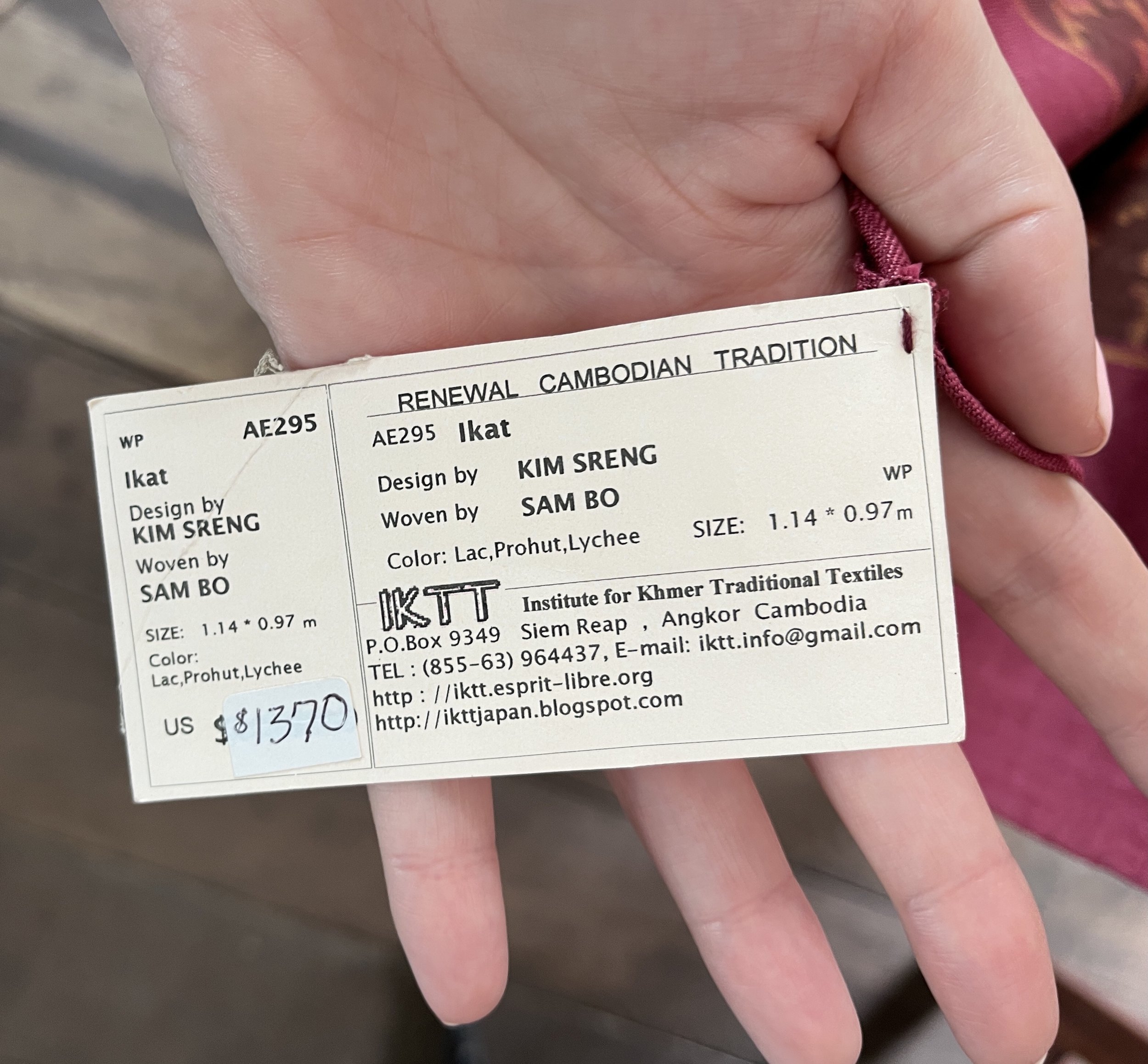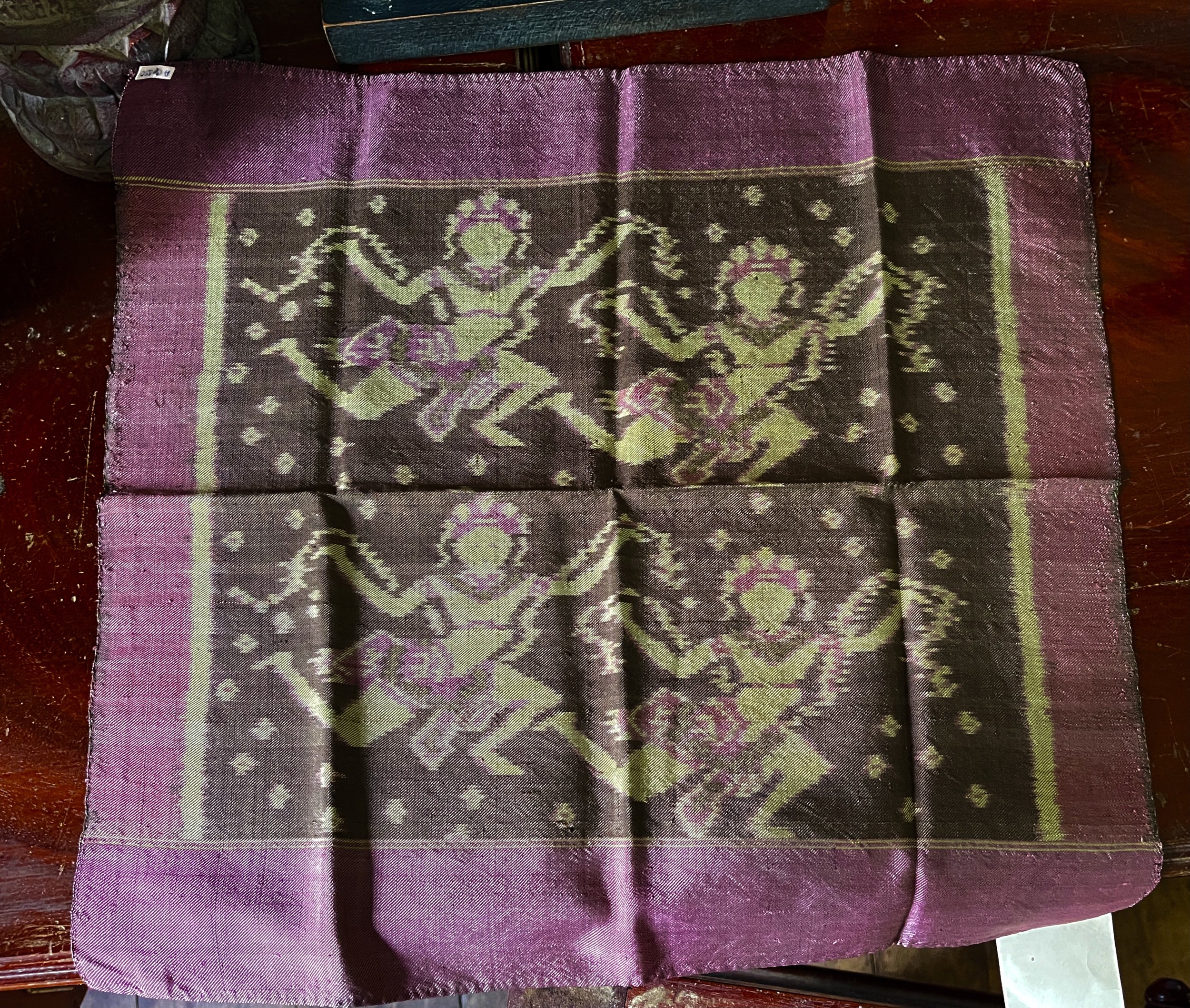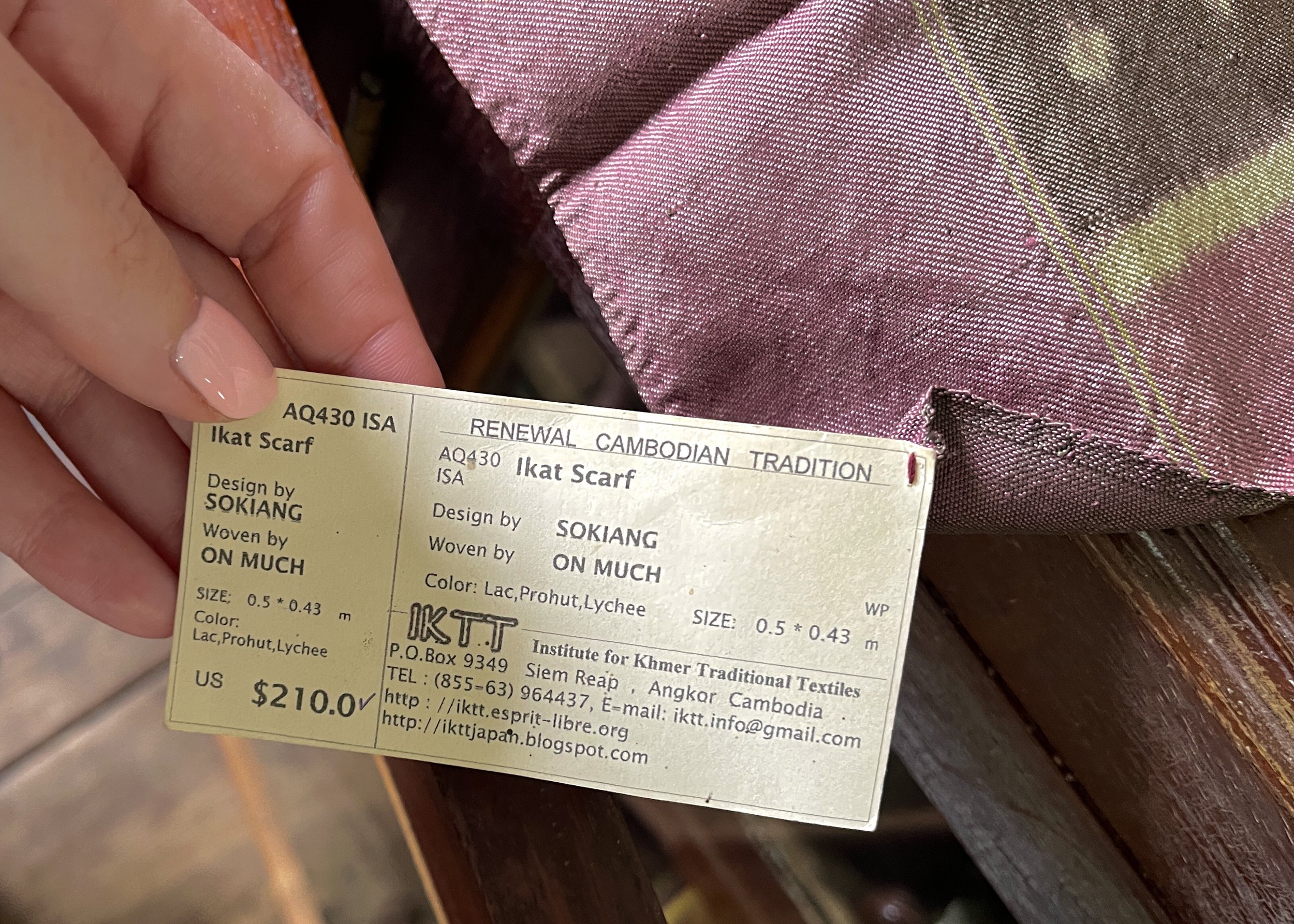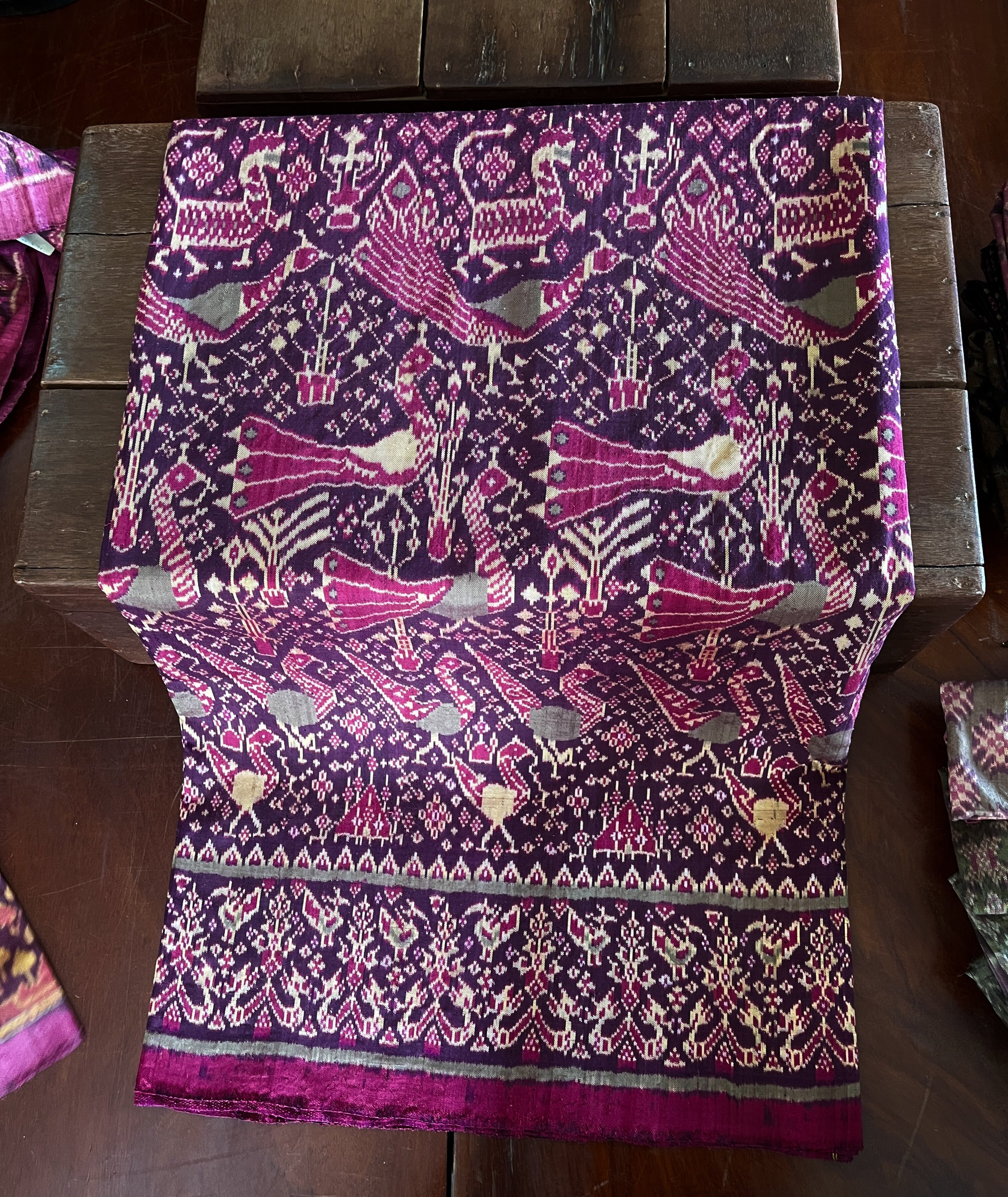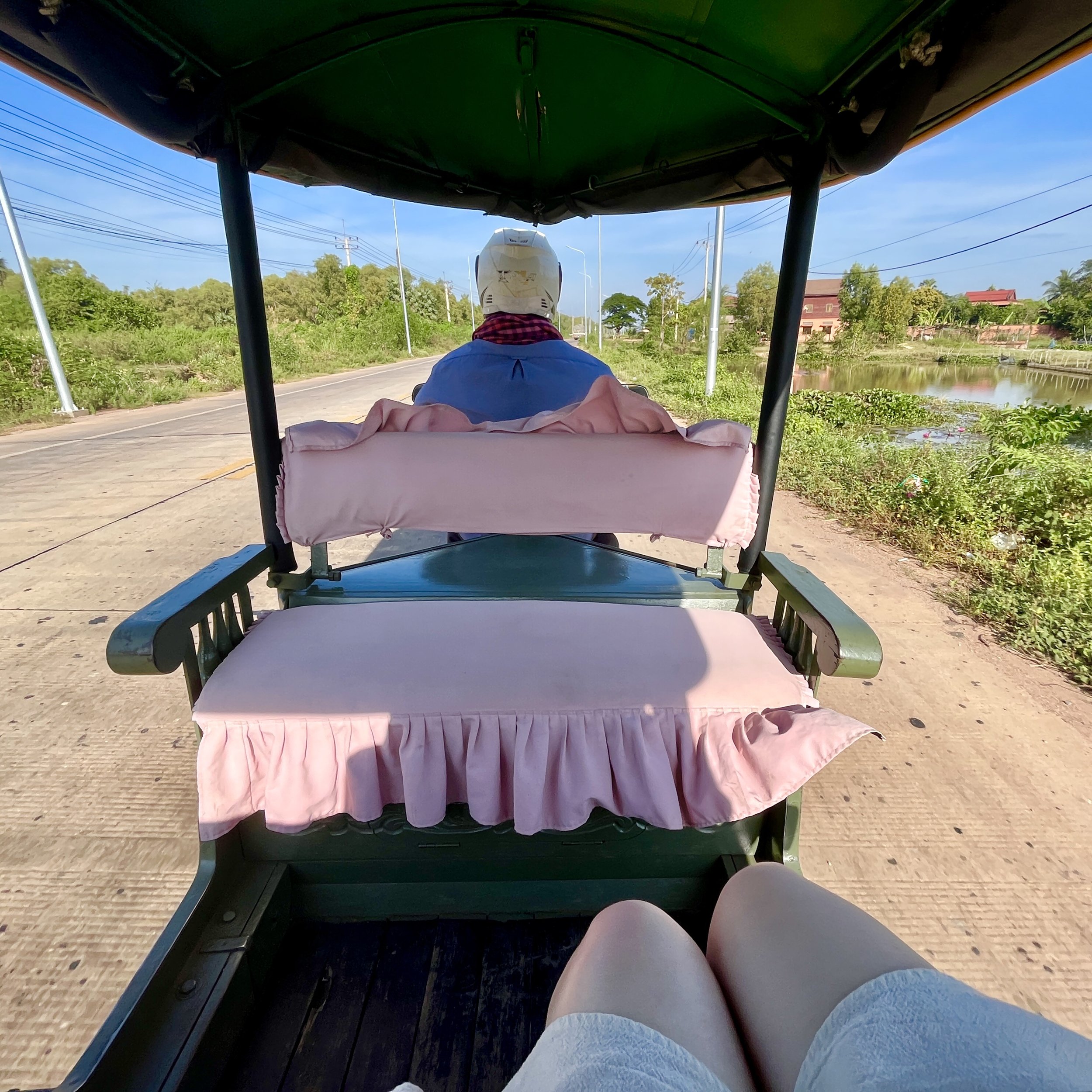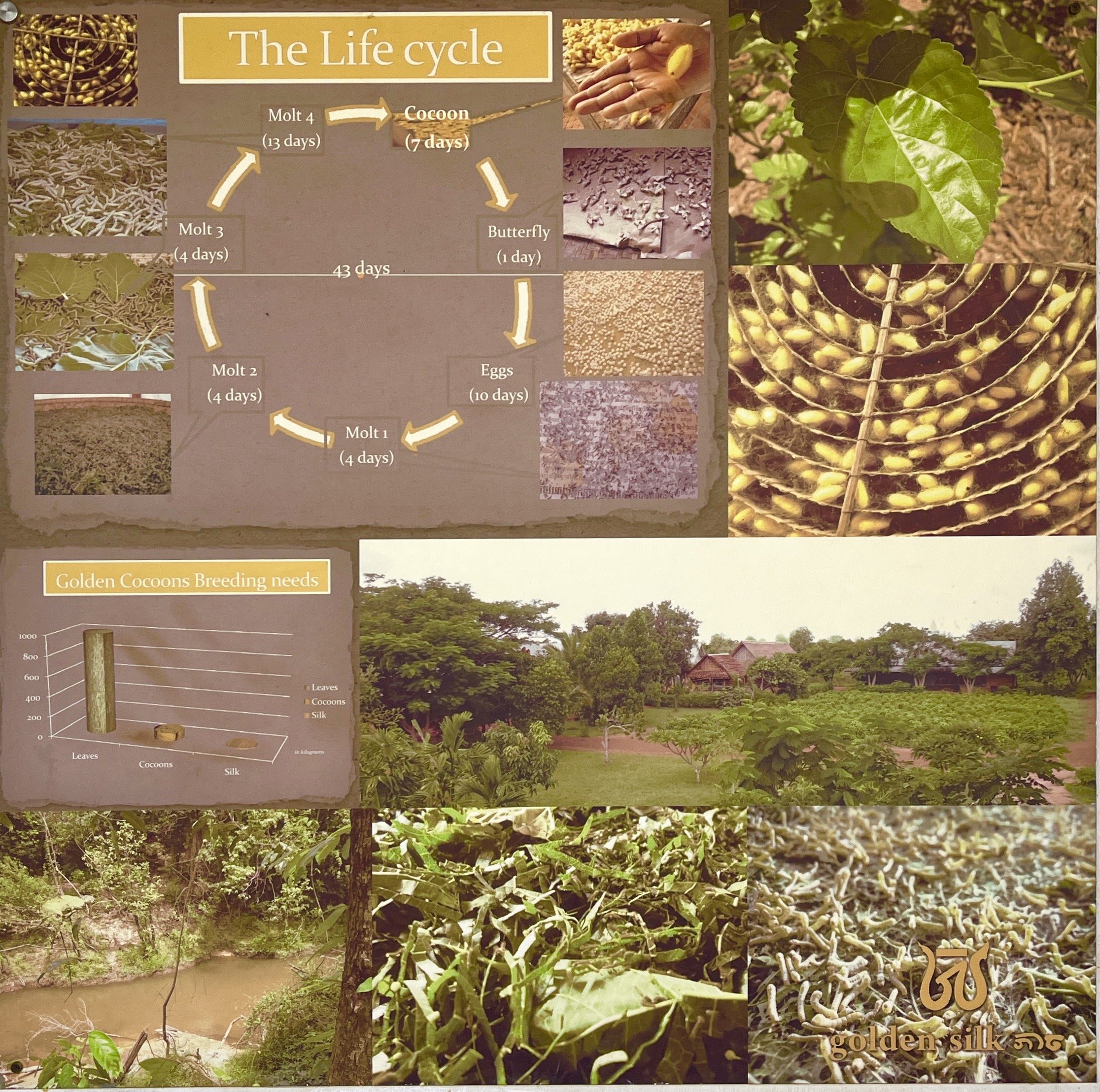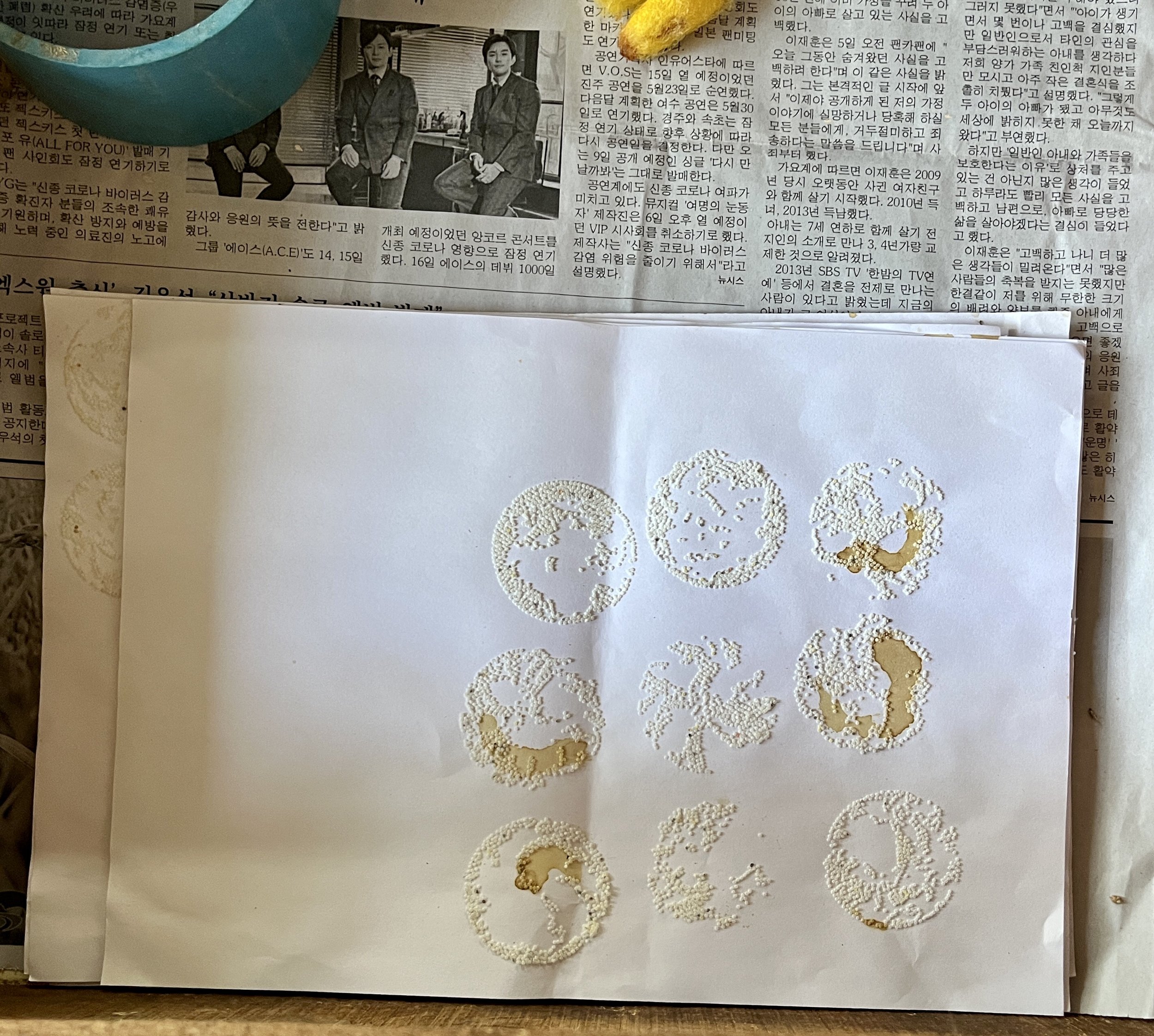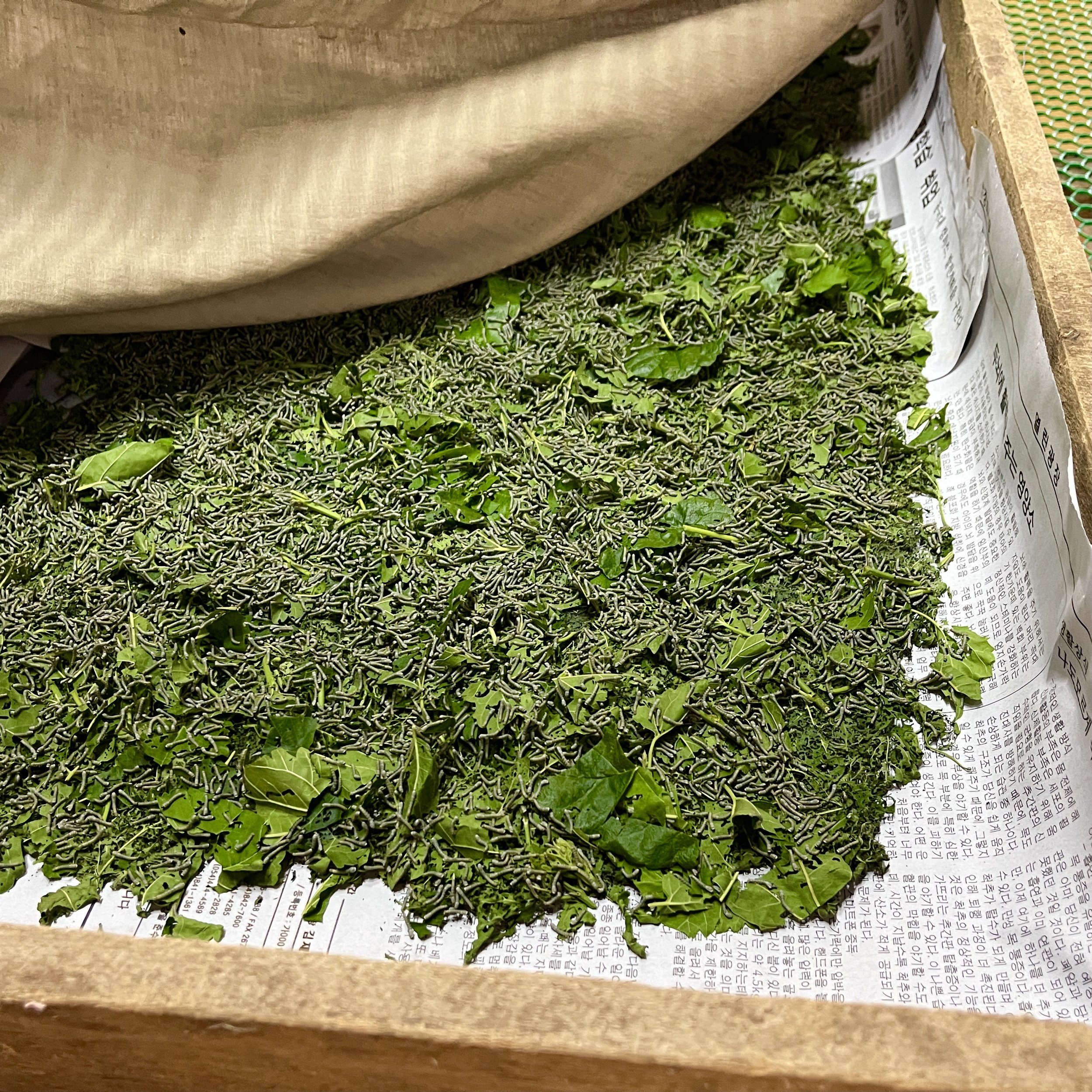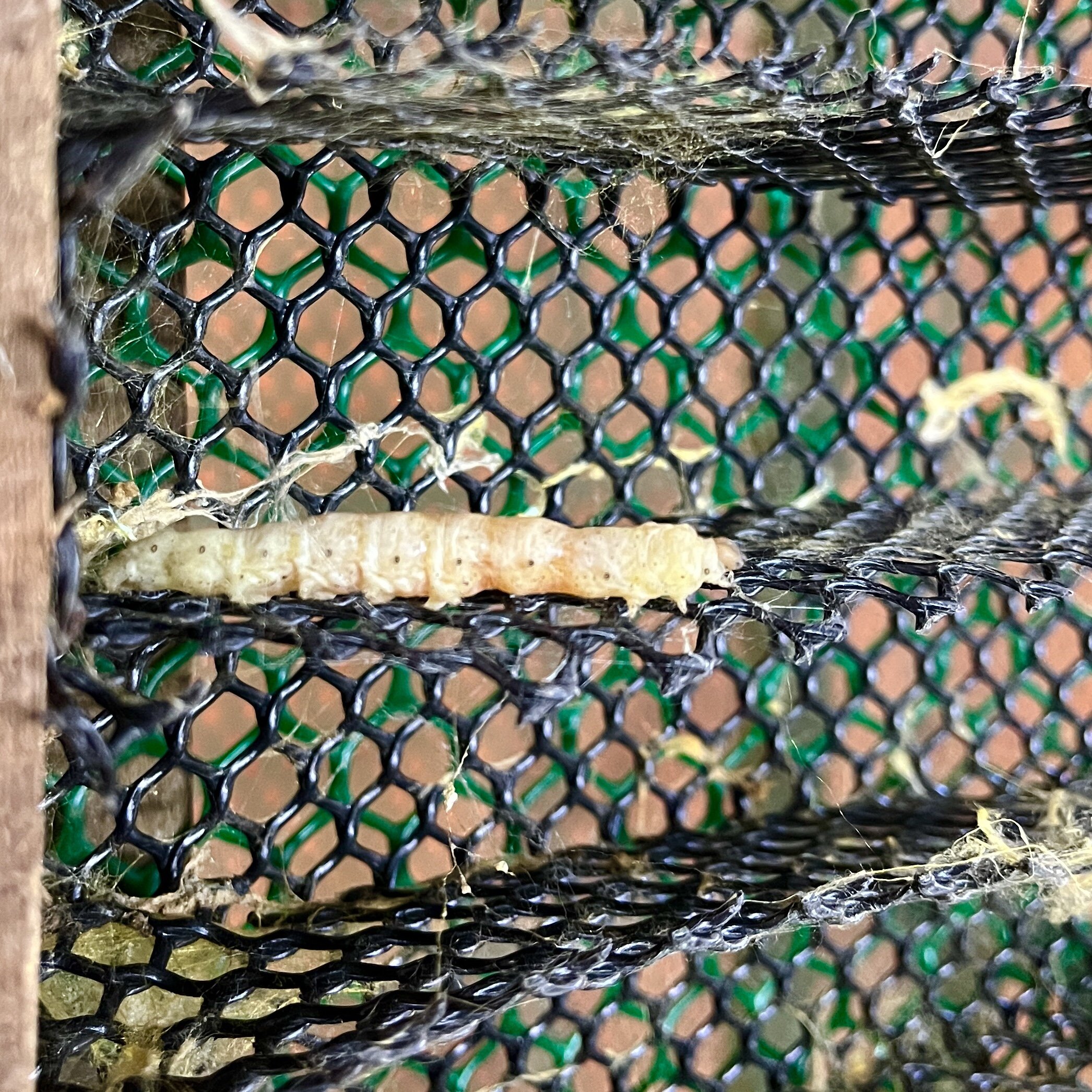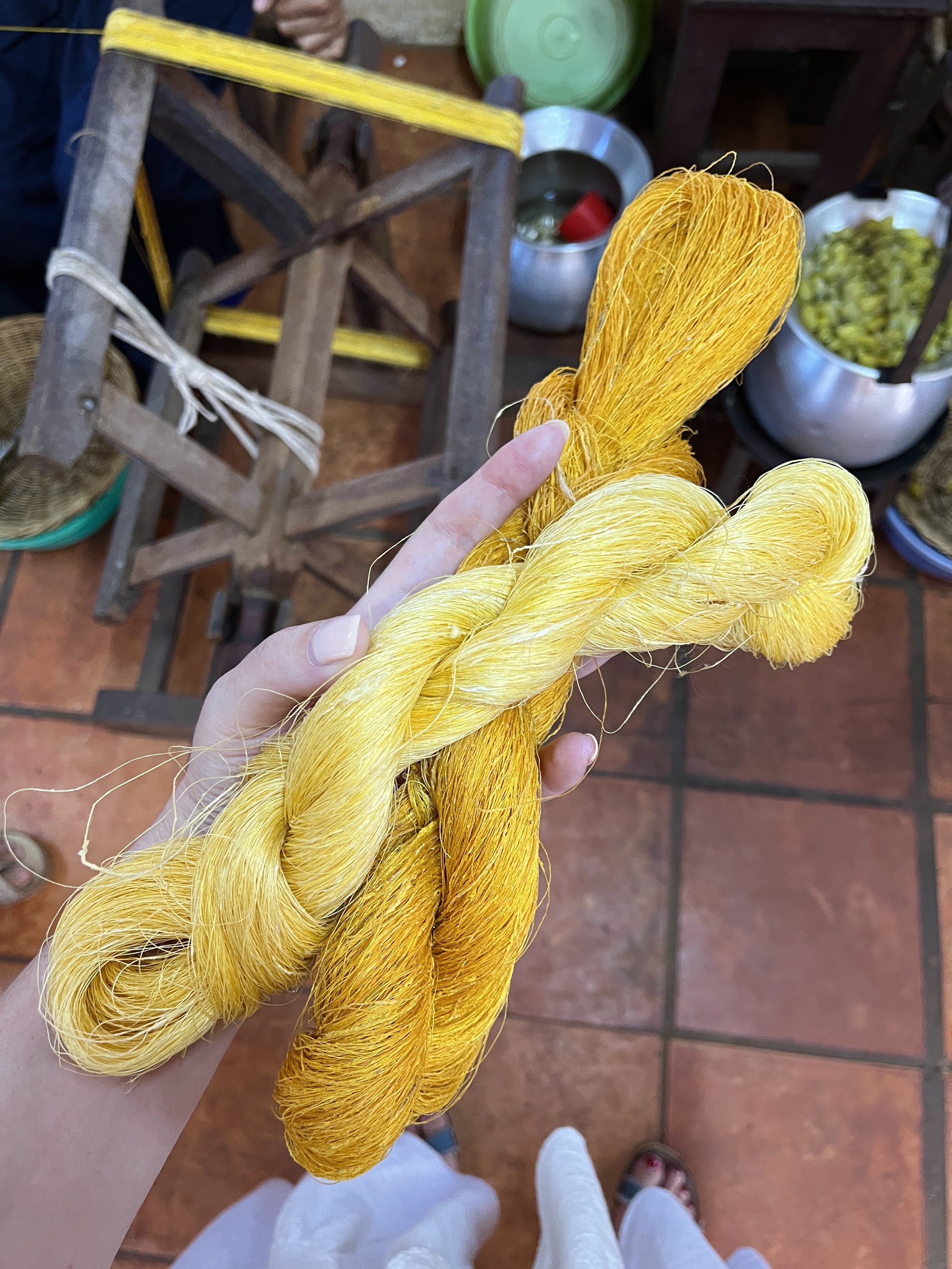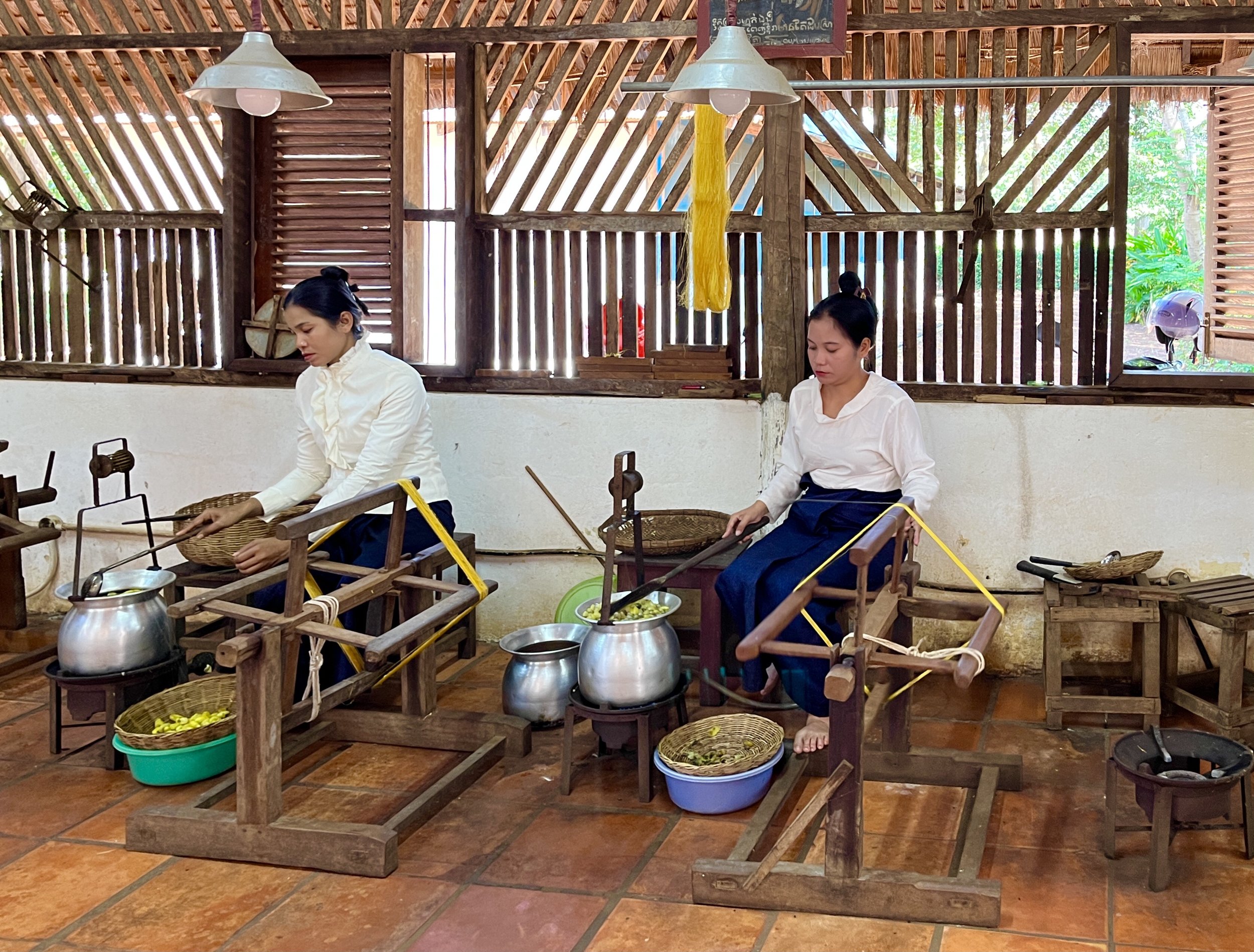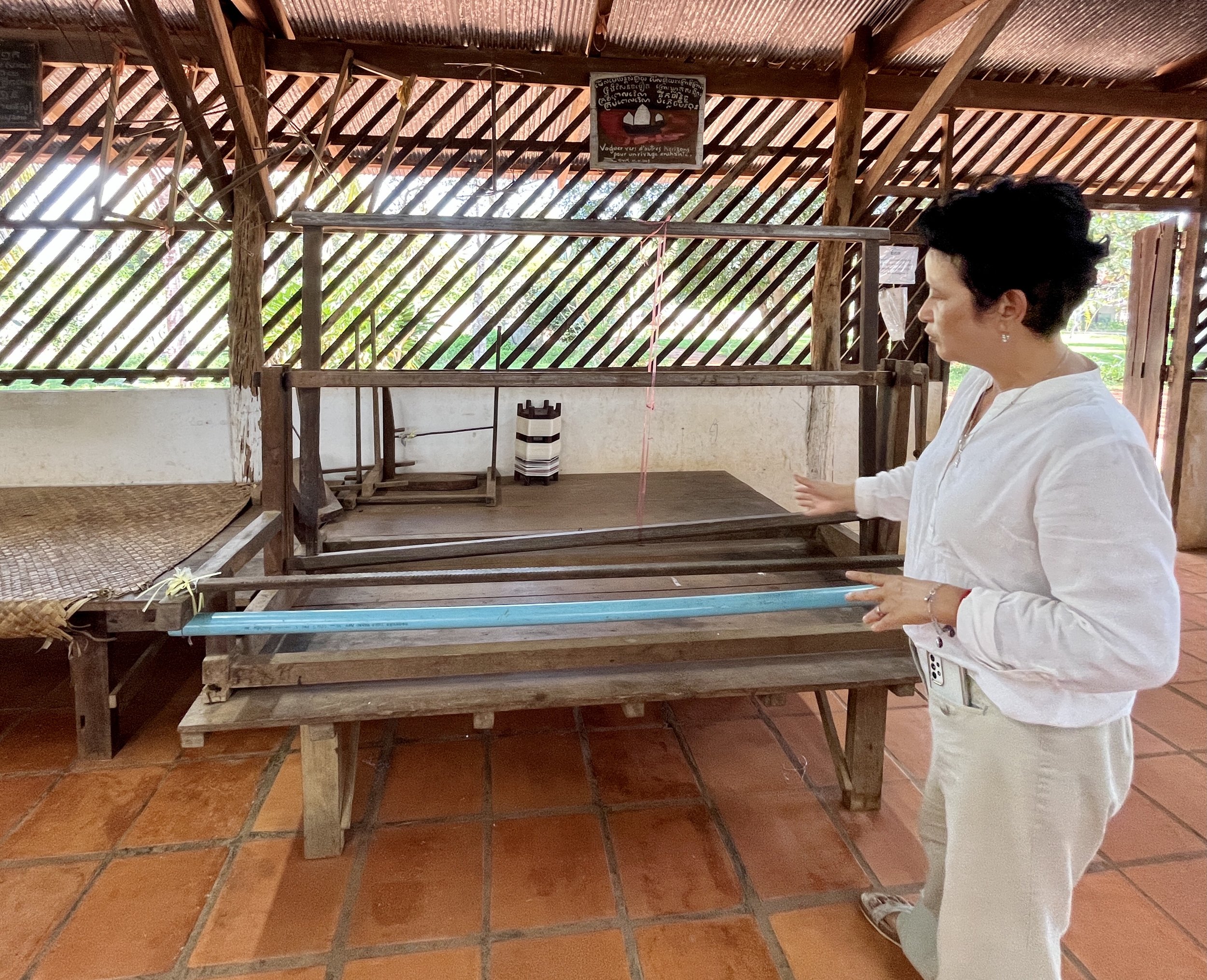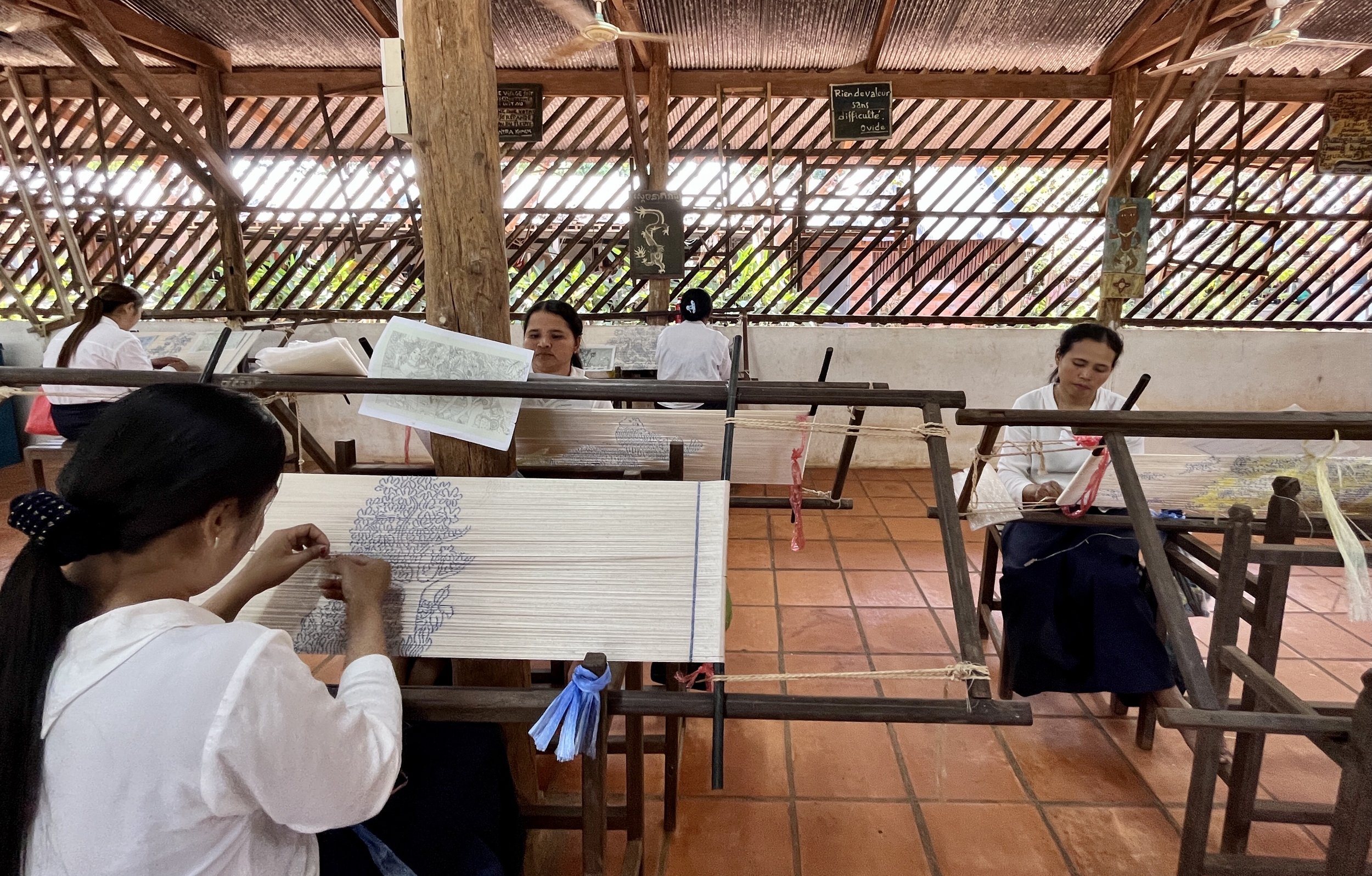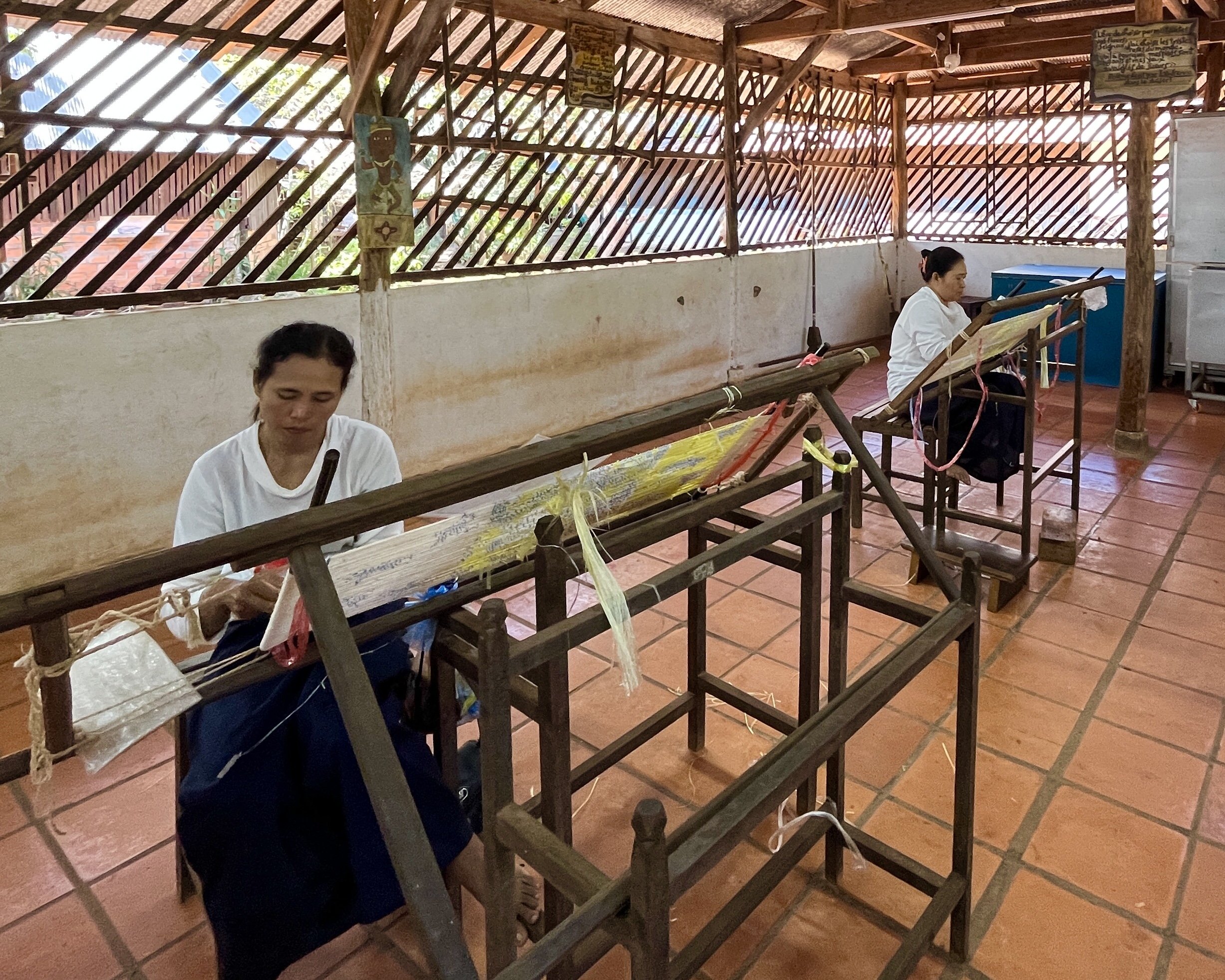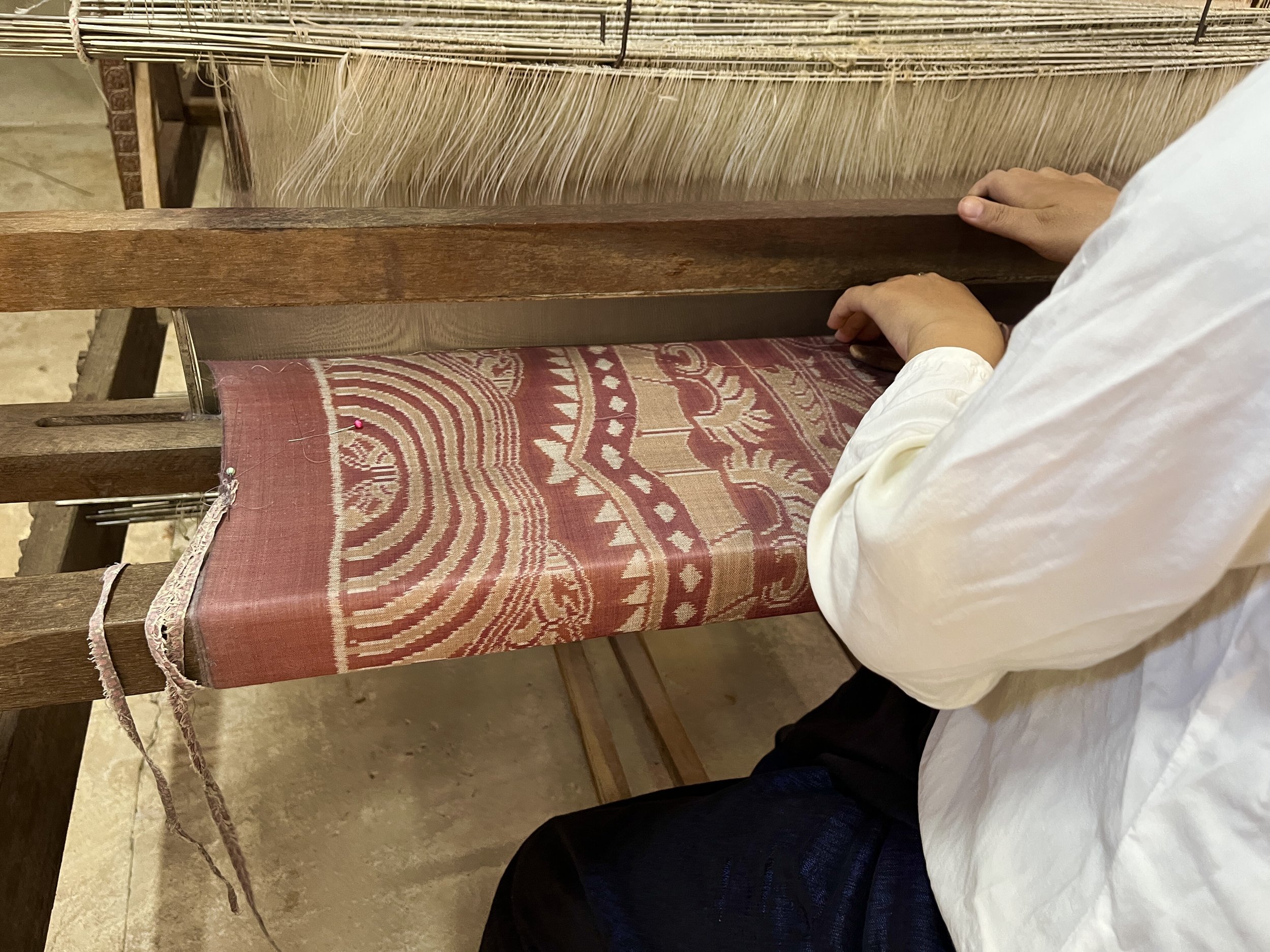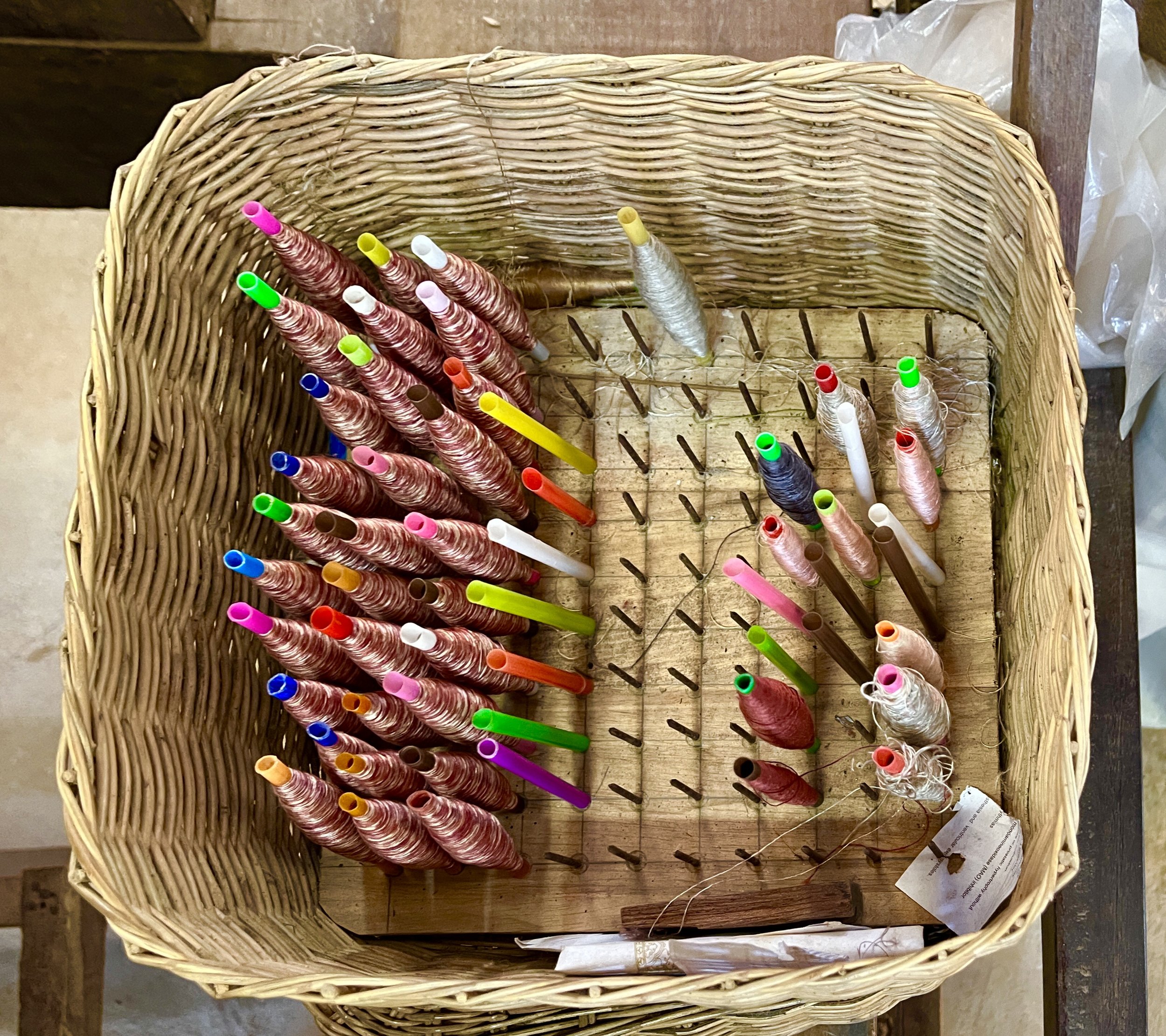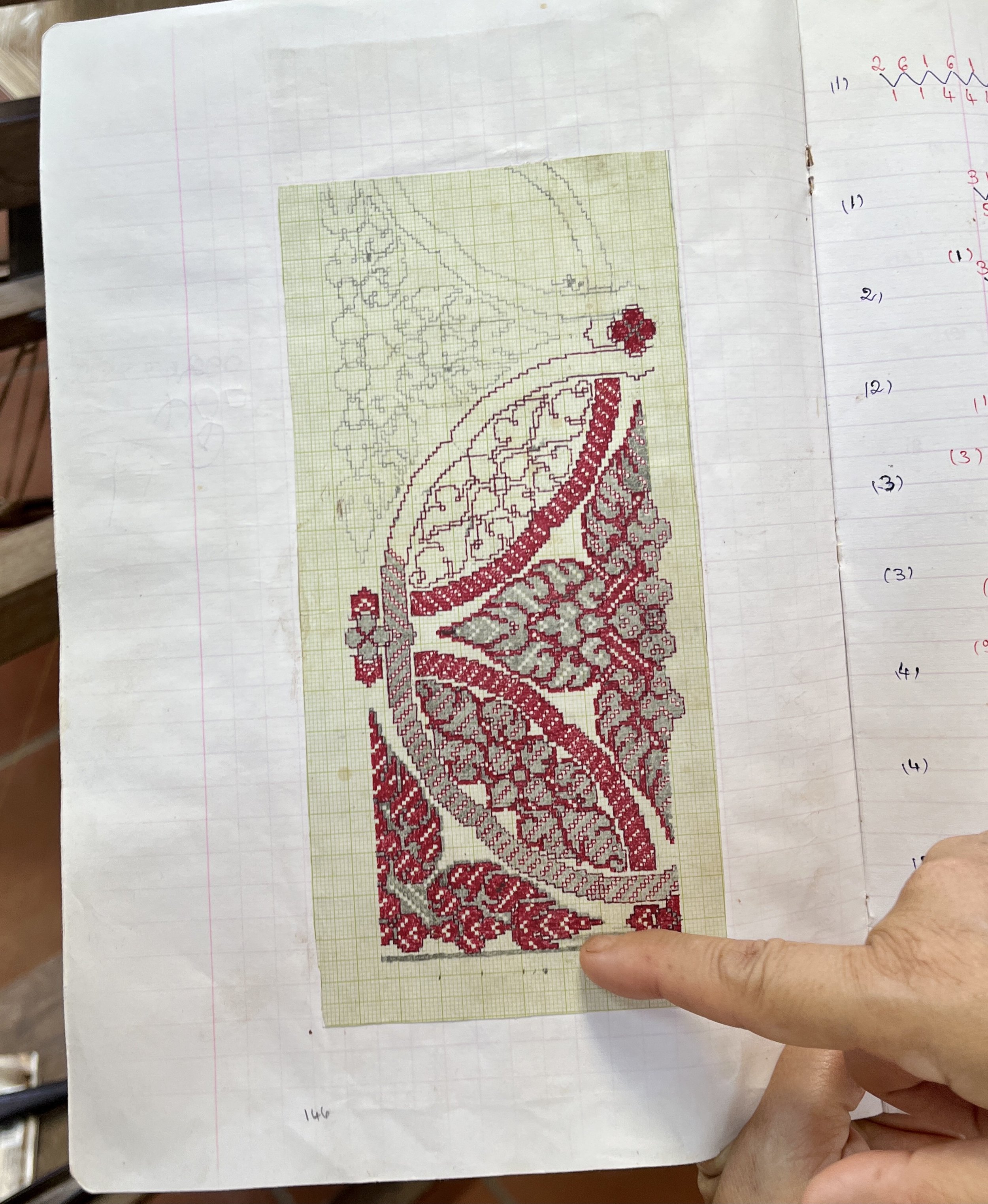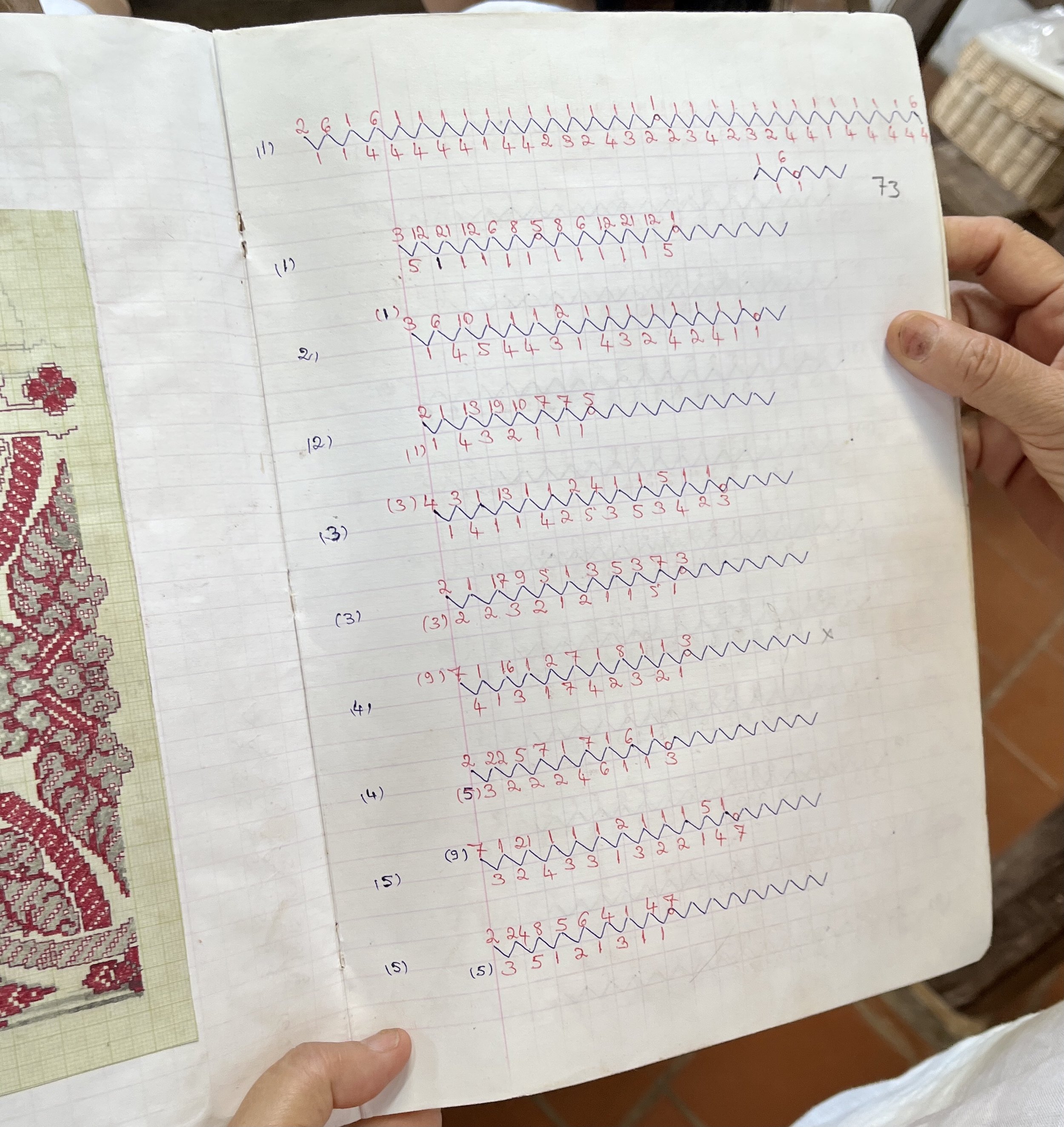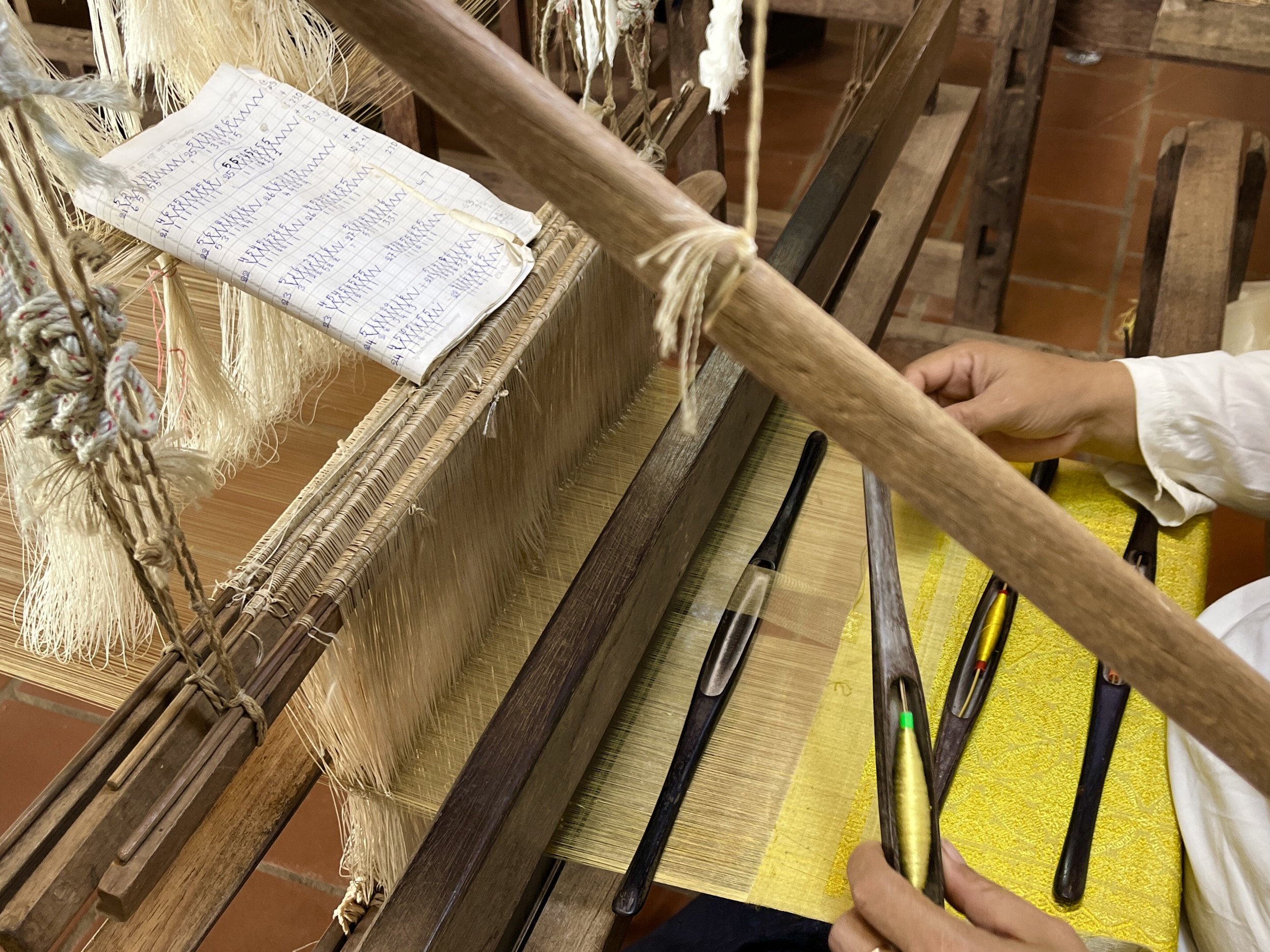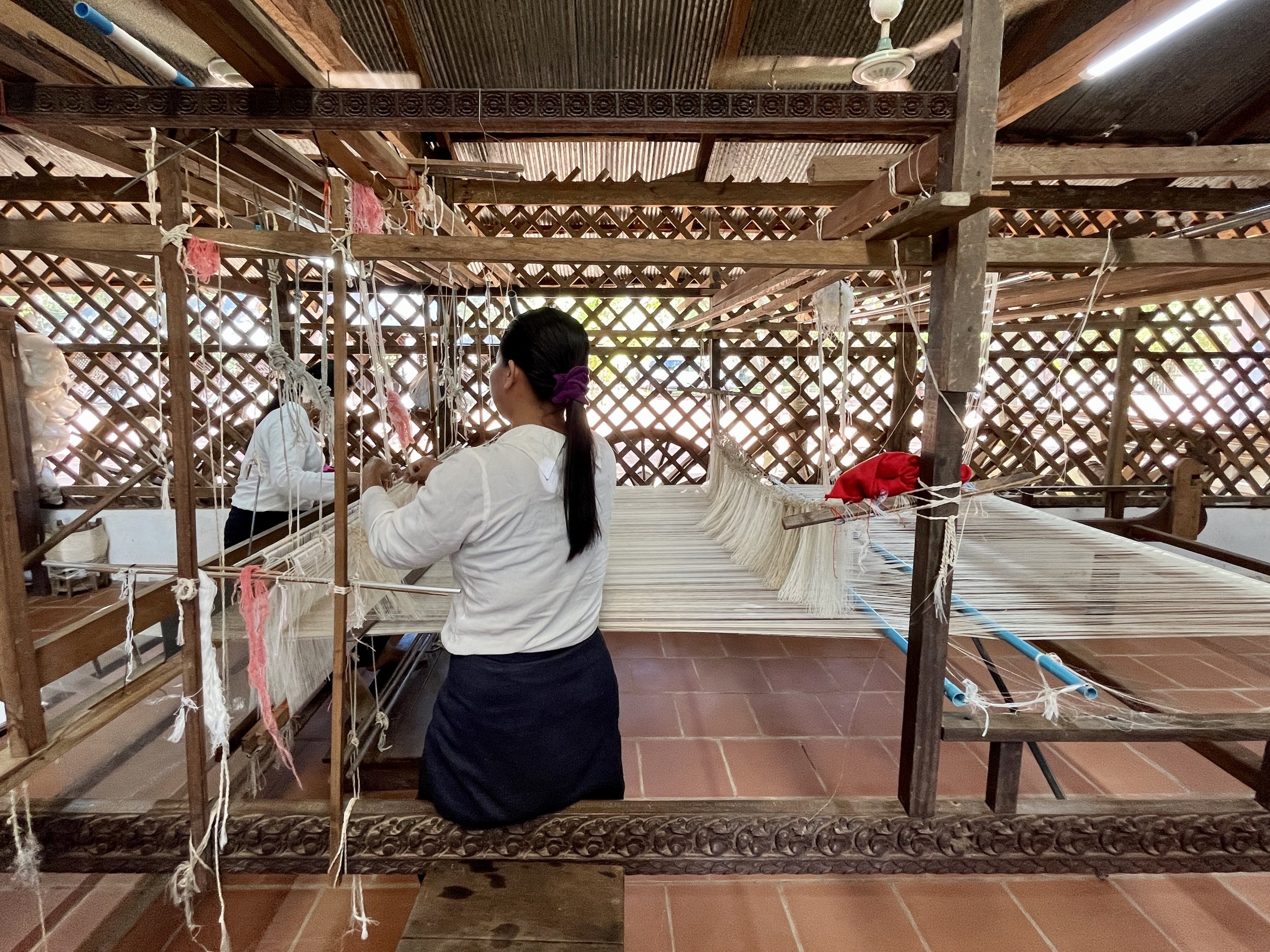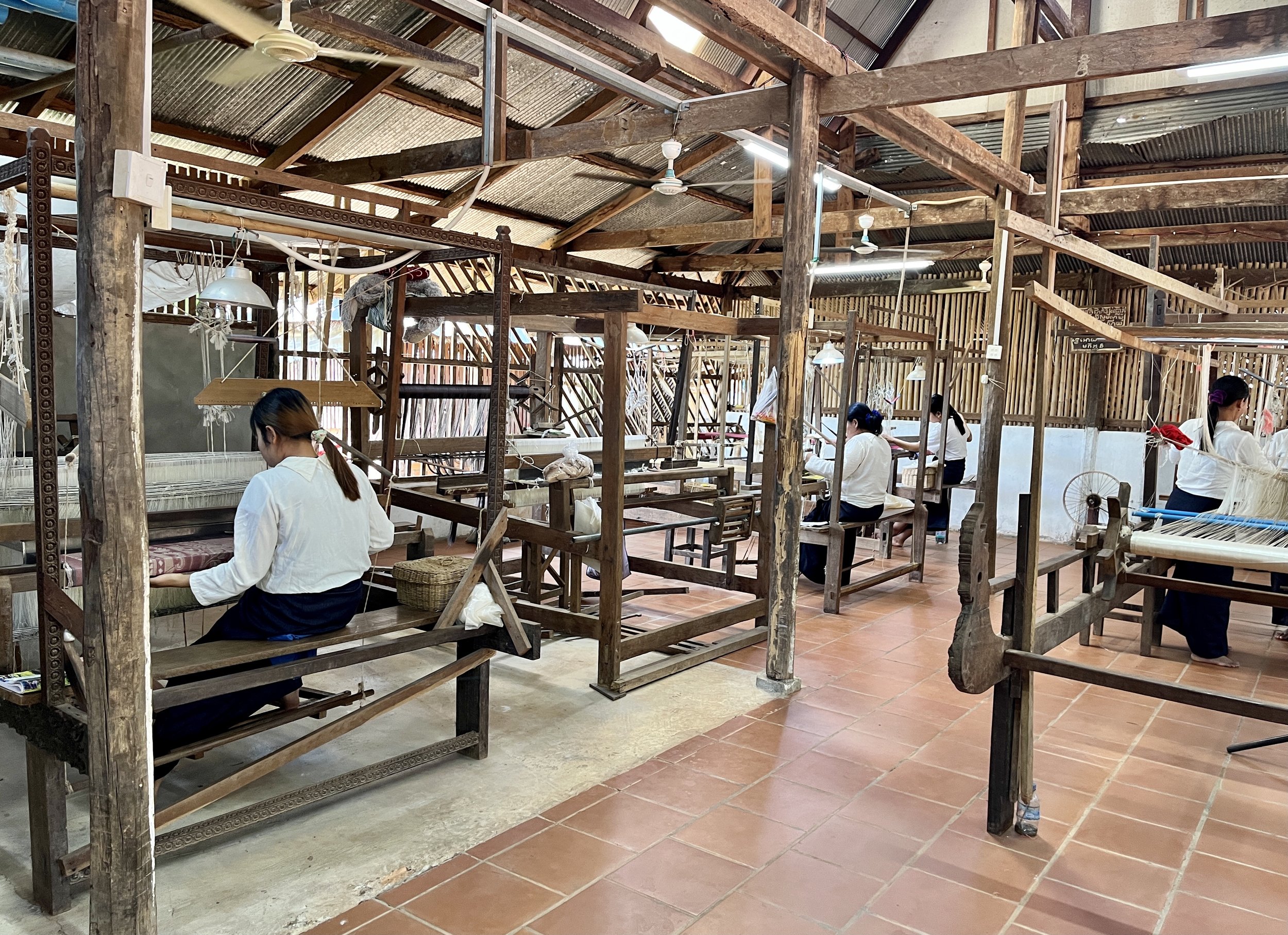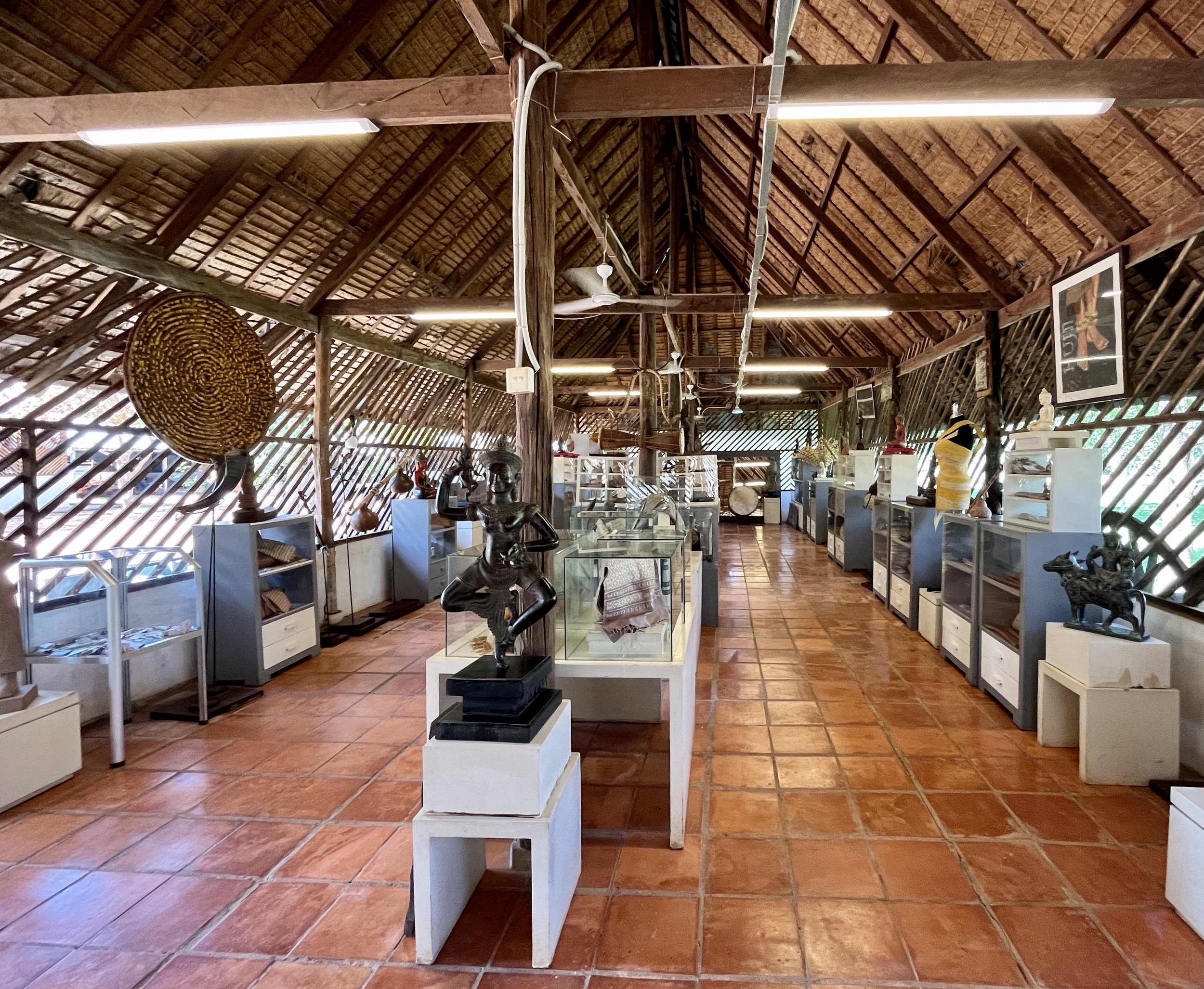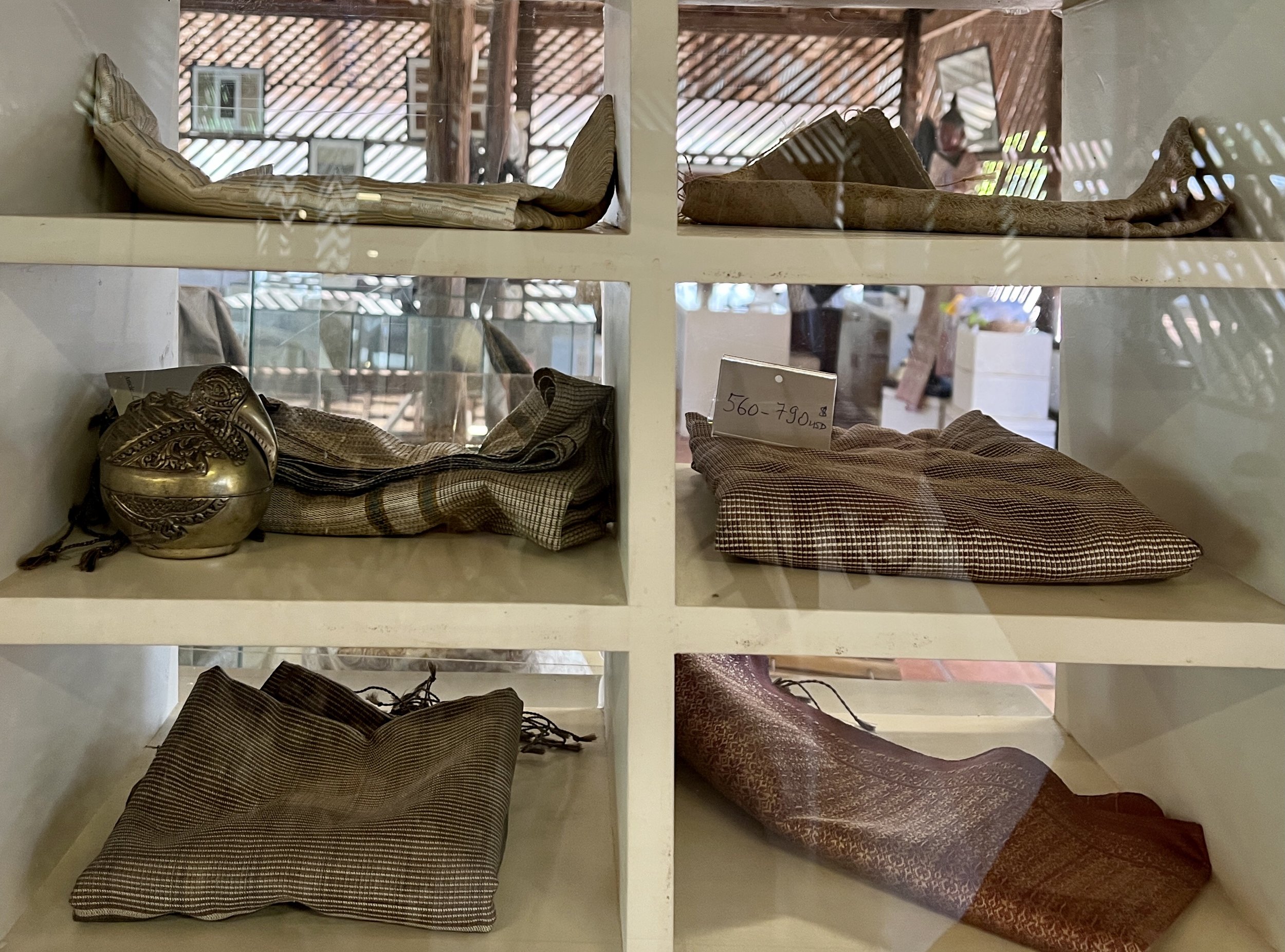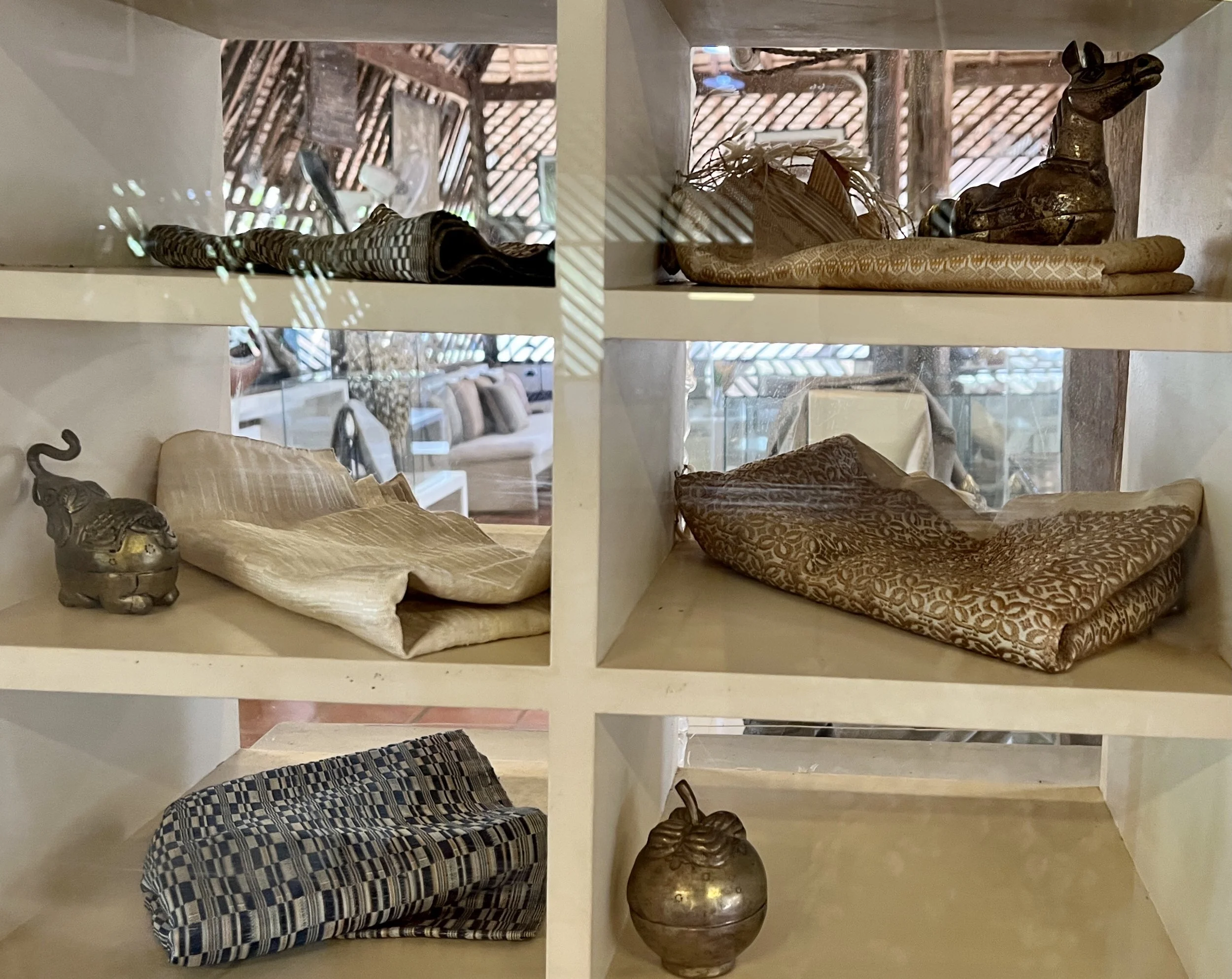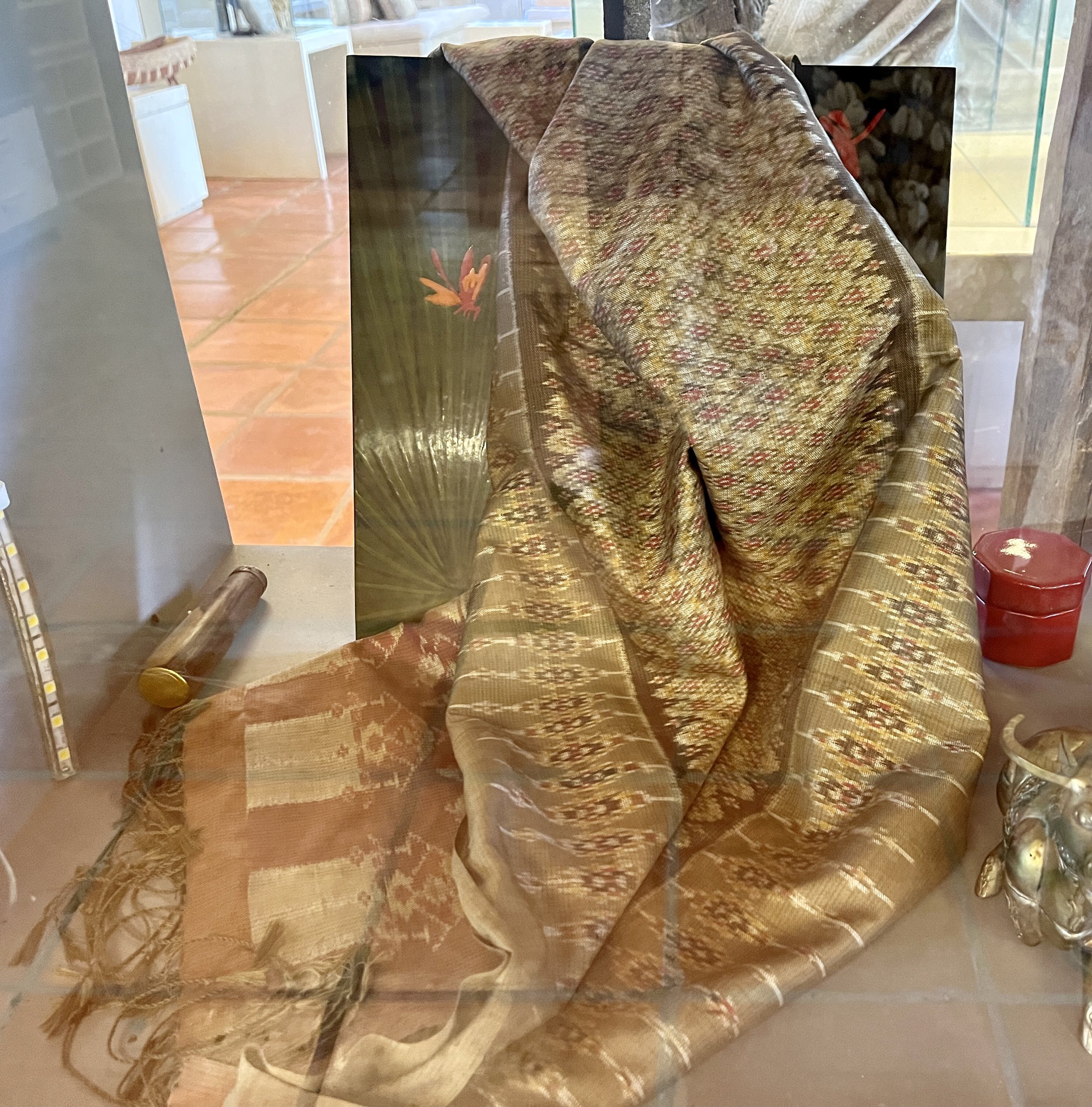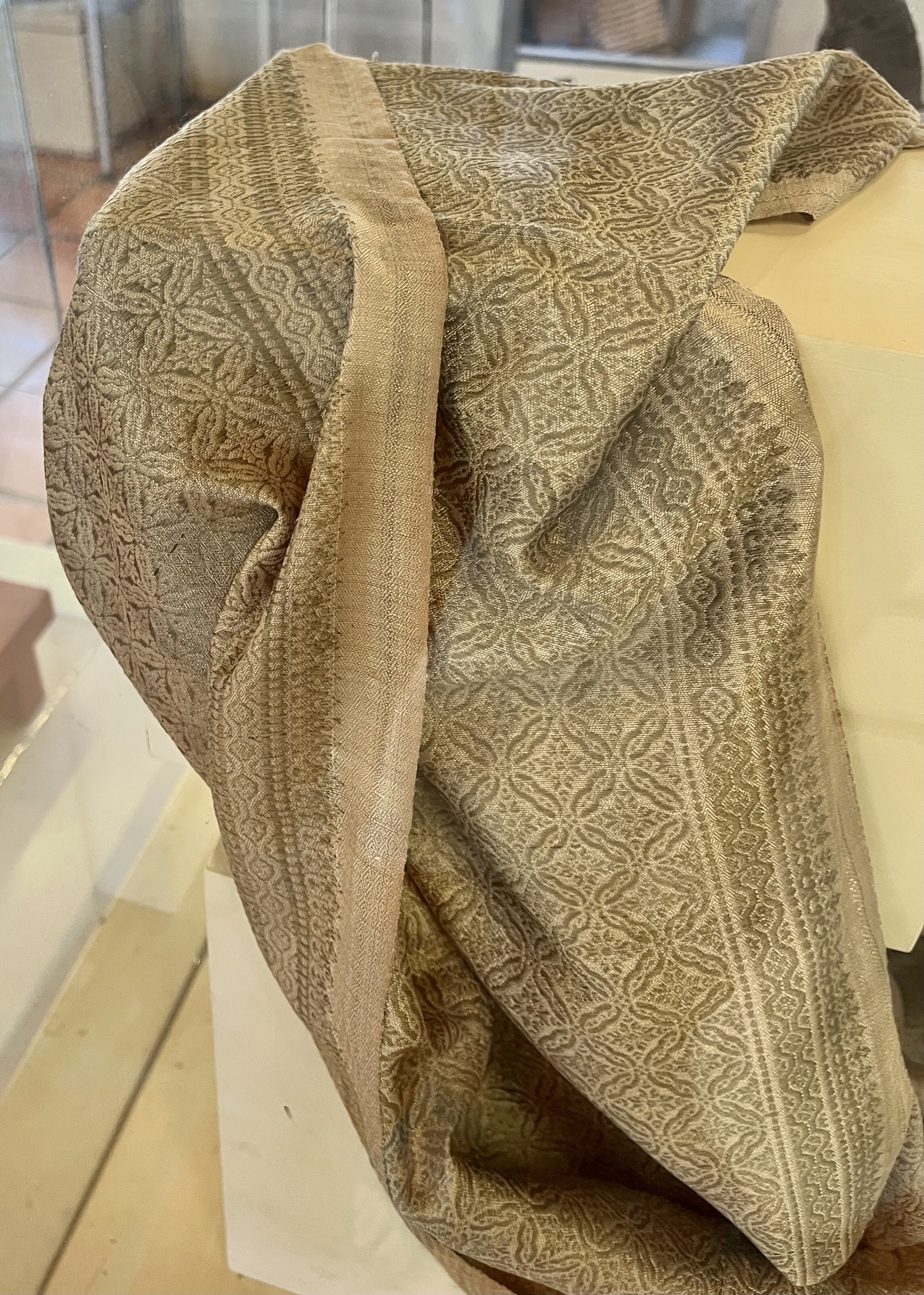There are three places worth shopping in Siem Reap, but they will cost an arm and a leg (and another arm, thanks) and are only for fabric aficionados: Samatoa Lotus Farm, IKTT, and Golden Silk Pheach.
Samatoa Lotus Farm
For $35 (or sometimes $50? I think they undercharged me) you can take a tour of the Samatoa Lotus Farm and factory. They make lotus silk, one of the most expensive fabrics in the world. It is harvested by hand from lotus stalks, filament by filament.
First, the owner explains why lotus silk is special- it's incredibly absorbent and naturally antimicrobial, plus completely sustainable. You also learn about kapok fruit fabric and some natural dye options. During your craft portion, you break apart lotus stems and twist the wet filaments to make a buddhist thread-style candle, make a sort of rough paper from lotus pulp, make old-fashioned incense sticks, drink lotus tea, and string dried lotus seeds on a lotus silk yarn to make a bracelet. At sunset, you take a short motorbike ride to an absolutely impoverished little village on a lotus lake, where they take you out on a boat and you can take pictures of the beautiful flowers, and eat some fresh lotus seeds. It's a fantastic experience and excellent value.
It takes 3 weeks to harvest enough thread to make a single scarf, which then takes 9 days to weave. It’s a 100% ethical and sustainable business, with environmentally safe and renewable production and fairly paid workers. So, the goods they sell in their shop are inevitably somewhat expensive by today’s standards, where terrible human and environmental tolls are the norm in the fashion industry. Most products are simple, some exquisite, some (especially their vegan leather efforts) a bit ugly and experimental. Hairbands run around $60, belts $75, face masks $45. Their UNESCO prize winning scarf in a 50/50 silk/lotus silk blend is $400, a bucket hat $450.
I knew I wasn't buying immediately, so I didn't dare ask the price per meter for anything, but you can get a quote on their website. 6 or 7 meters of fabric in their UNESCO blend is on my wishlist for when I’ve saved something near what I think they’ll ask. Buying from businesses like this is the definition of putting your money where your mouth is!
If you want to visit, you absolutely must arrange with a tuktuk to take you there, wait for you, and take you back to your hotel. It is in the middle of nowhere (a solid 40 minute drive outside of Siem Reap proper), Grab doesn't work out there, there's no spot on the road to hail a motorbike or tuktuk, and locals get rowdy and drunk as soon as the sun goes down (especially the tuktuk and moto drivers!); you absolutely will get stranded in an unsafe situation if you don't have your own transport. Still worth the visit!
IKTT
You can visit the shop, or get the full experience and arrange via their website to visit the village and stay overnight there.
To quote the IKTT website: "The IKTT specialises in the revival of Khmer silk ikat. Throughout history Khmer silk weaving has been regarded among the best in the world, however, after years of war, this ancient art form nearly vanished. The beauty of such silk has been its savior. Founded in 1996 by Kikuo Morimoto, we take a purist approach to the reproduction of traditional textiles, not just by recreating the style but by following the traditional practice seen a thousand years ago in the ancient times of the Angkor Dynasty. To achieve this, we have re-planted a traditional forest to cultivate everything from the natural dyes to the silk in a rich natural environment."
The 'purist approach' is three-pronged: Cambodian golden silk worms; natural dyes from local plants; and hand spinning, tying for ikat, and weaving. Everything is done to the highest traditional standards; they offer some souvenir items like kerchiefs and shawls in solids or non-traditional oversized gingham, but every pidan (religious wall hanging) and sampot hol (women's ikat skirt) is traditional in every respect. They have their own mulberry tree forest and their own lac insect nests, prohut trees, almond trees, lychee trees, annato plants and wild Cambodian indigo plants to make their own dyes; around 160 people (those working in production and their families) live in their own old-fashioned weaving village; they use the dye techniques and around 200 weaving patterns handed down from their ancestors. I think one of the best things about shopping at IKTT is seeing the year your piece was made, the natural plant dyes used, and the weaver. You truly buy an heirloom, not just a skirt or a scarf. Being perfectly historic, all production is 100% organic and sustainable.
They seem to financially support themselves primarily through a Japanese clientele and network cultivated over 20+ years by their founder, but they do have a shop in Siem Reap and a strong instagram presence. Sampot hols are available at the shop, or by custom order; it takes 2-3 months for a sampot hol or pidan to be made, perhaps more depending on the season and intricacy. A traditional size Cambodian sampot hol is around 2 meters by 1 meter, perhaps a bit smaller; Cambodian women are quite small. A heavier woman can order an extra long version to ensure sufficient drape, but due to the dimensions of the traditional looms no skirt will be full length, or even ankle length, on anyone over 5'5" or so. Midori, the contact person, responds very quickly to any inquiry and will quote a price per meter for a design. For one of the traditional sampol hols, expect to pay around $600/meter. A complicated pidan will be more; a solid or simple stripe less. That breaks down to between $1000 and $2000 per skirt depending on the dyes, weave, size, time etc.
Golden Silk Pheach
Finally, there is Golden Silk Pheach. A Cambodian raised in France, Pheach's trajectory since returning to Cambodia has been much like the founder of IKTT's: she bought a small farm, planted mulberry trees, feeds them to indigienous Cambodian golden silk worms only, grows and buys local natural dyes only, and employs and trains local women in traditional techniques. The main difference is that while IKTT is primarily interested in providing historically accurate products, Pheach has a very refined aesthetic, and is able to use traditional techniques to create modern products that recall their traditional origins in the most elegant way.
A tour at Golden Silk is like a personal couture appointment with Pheach: she explains the history of Cambodian golden silk weaving since Angkorian times, and how the rare Cambodian golden silk worms are superior to the genetically modified white silkworms used elsewhere in the world. She also explains not only how ikat dying works, but where she gets her inspiration for her modern designs, and how they build custom looms for large textiles.
A small scarf at the shop is around $500; the larger and more intricate they get, they climb over $1000, $2000, etc. Some of the largest, most difficult designs can only be executed by an artisan with many years of experience, who then requires another 2 to 3 years of full-time work just to complete the piece.

